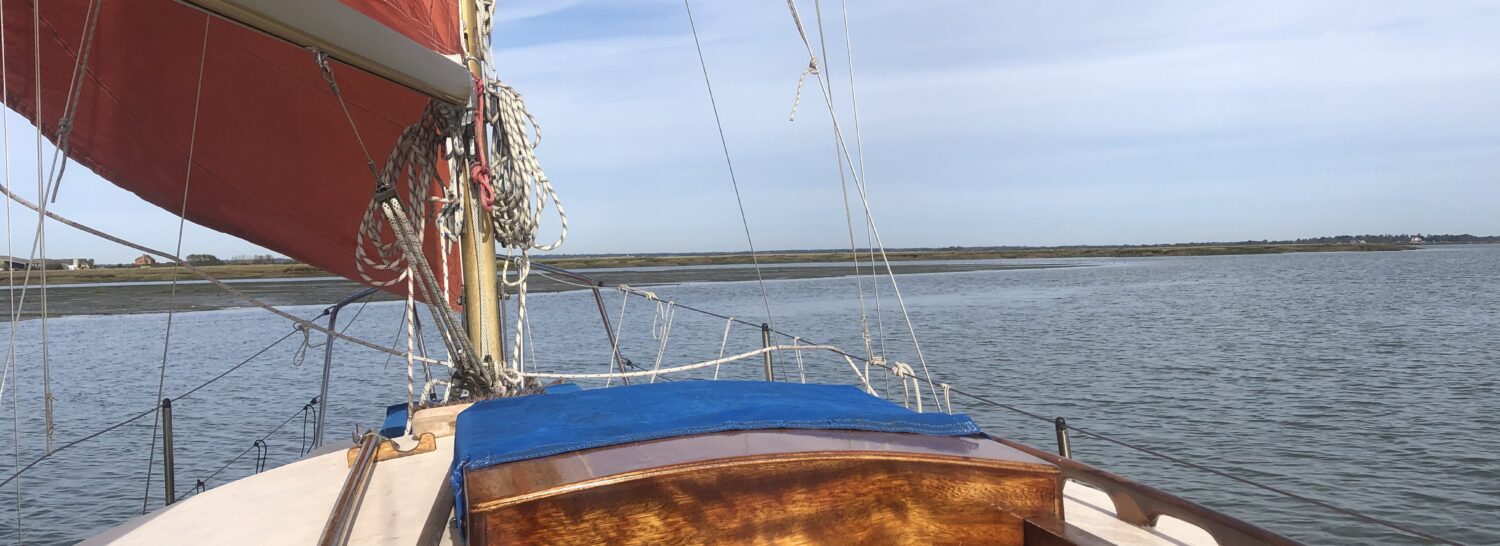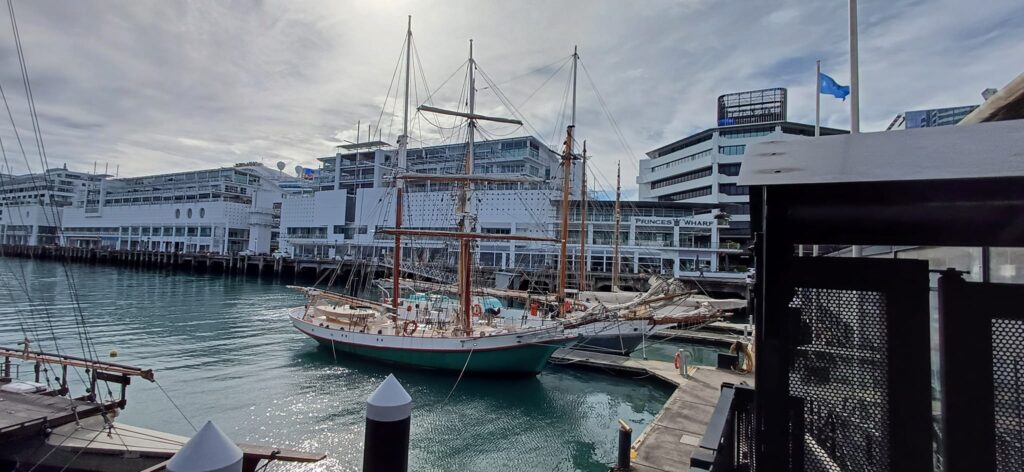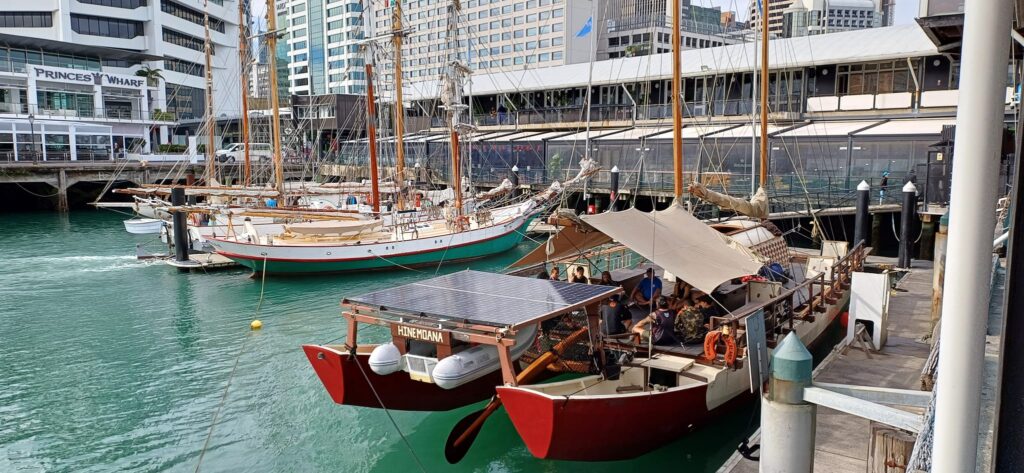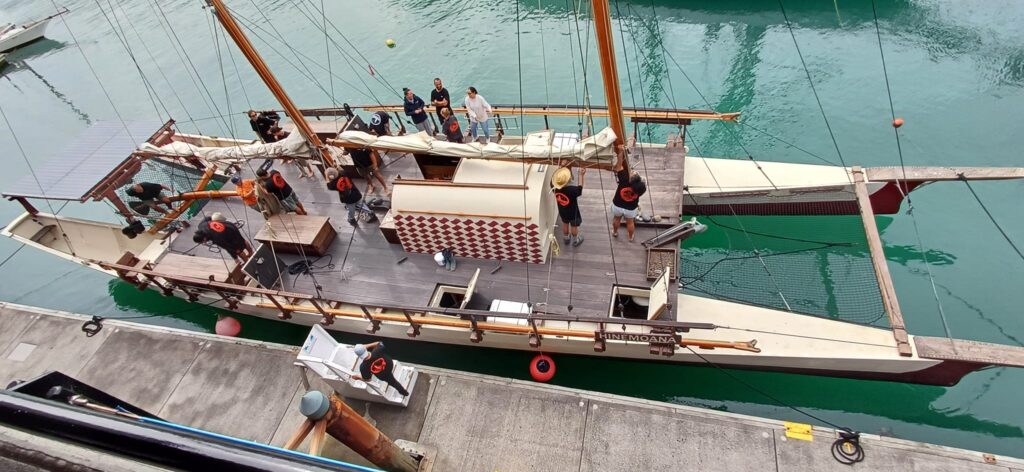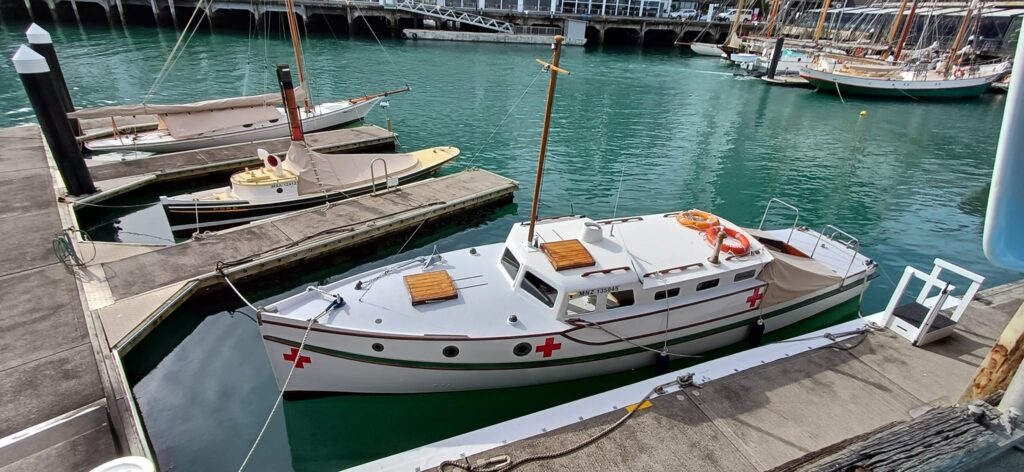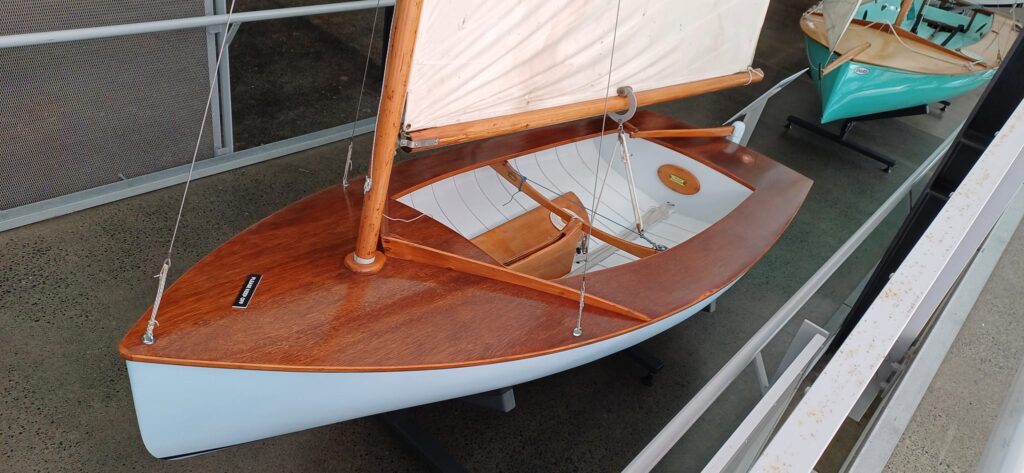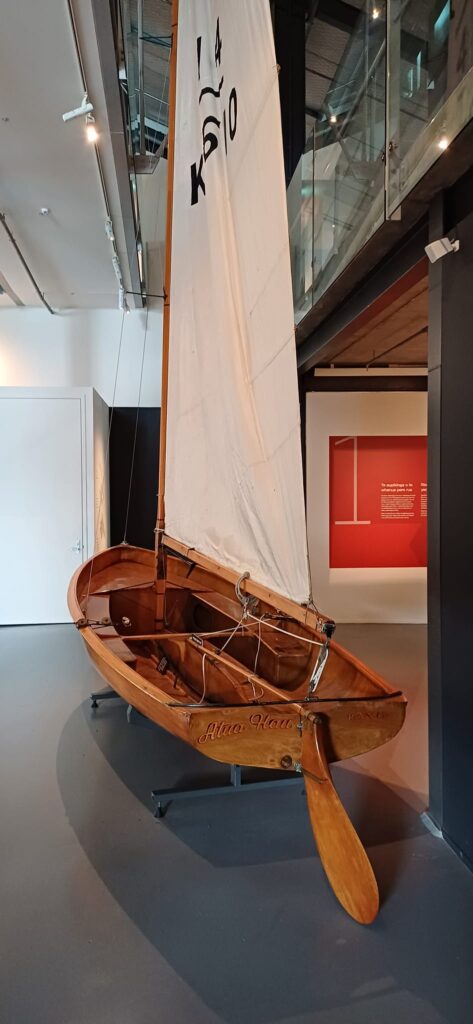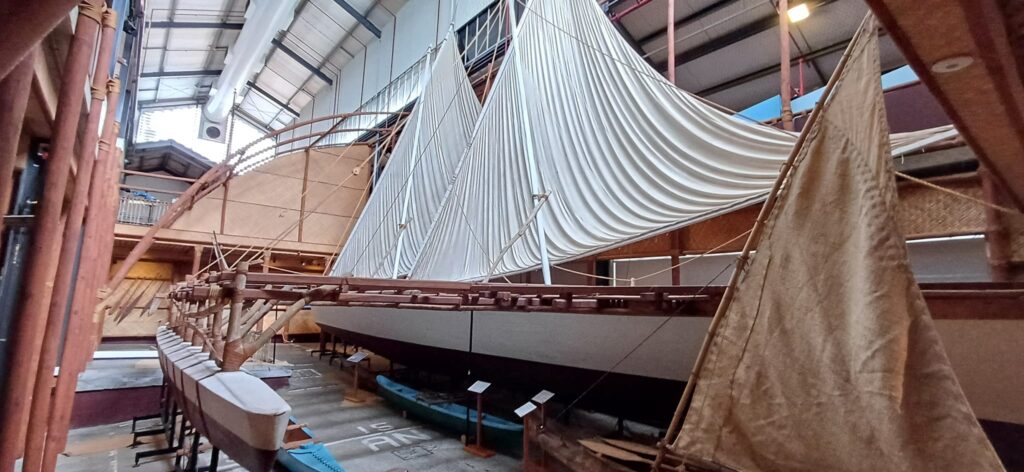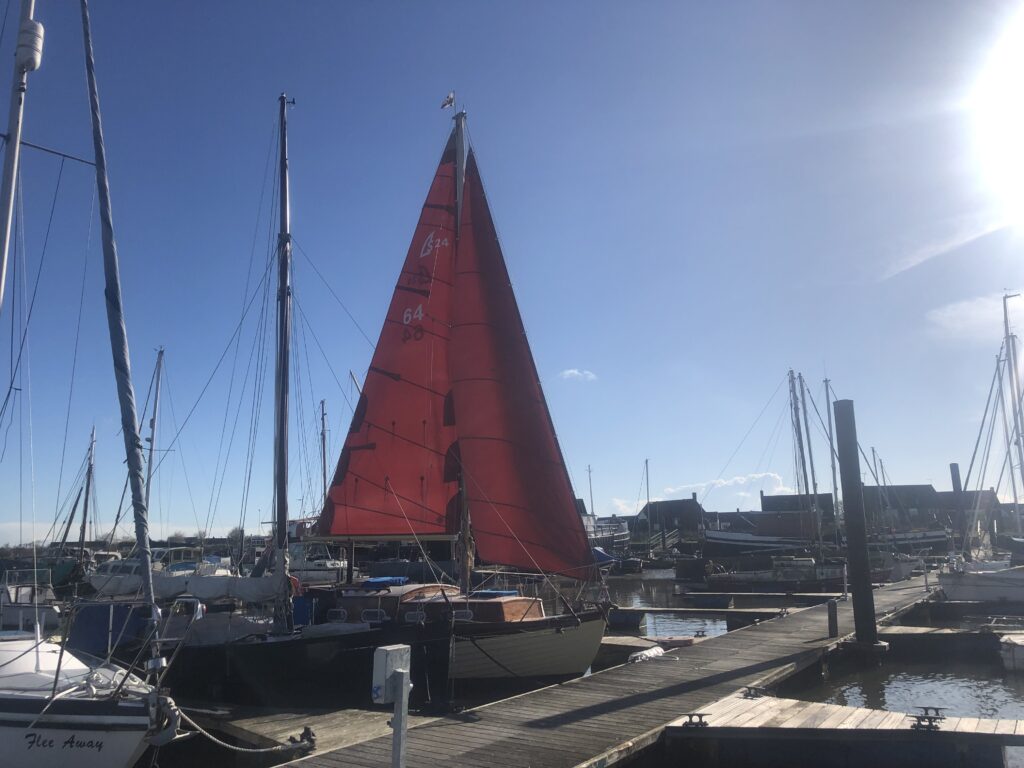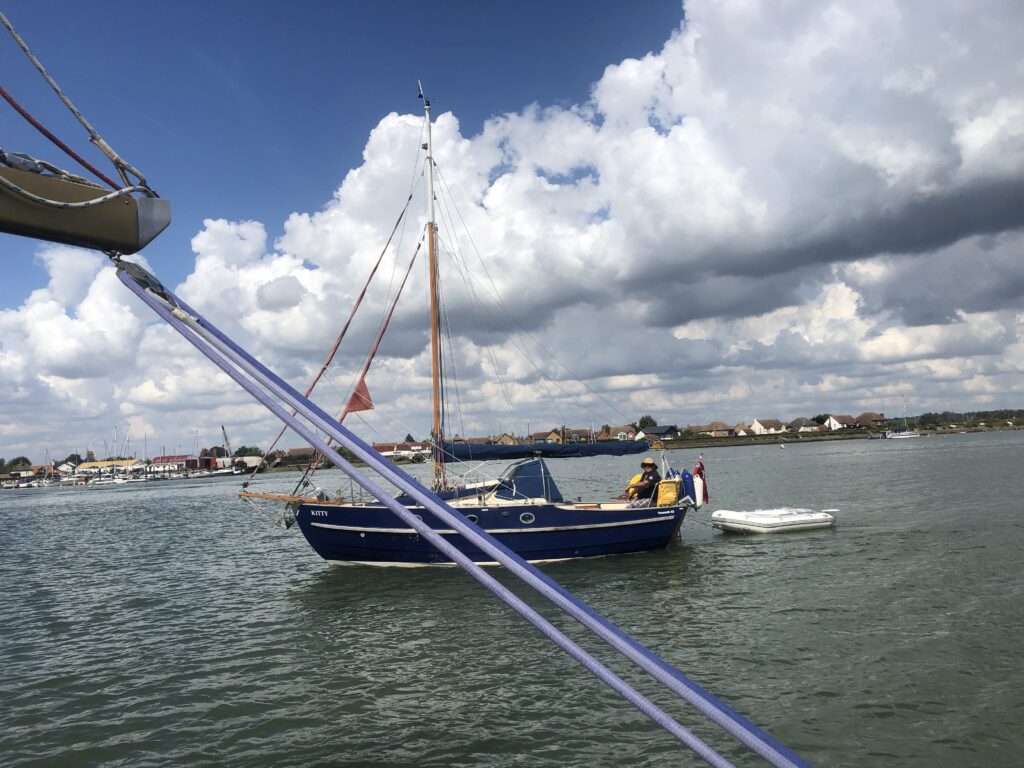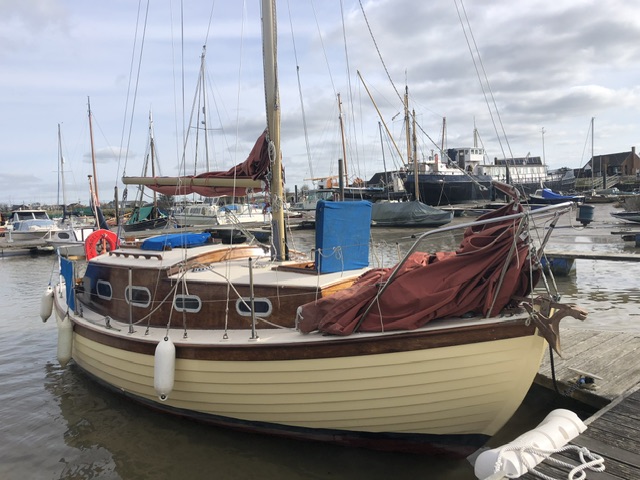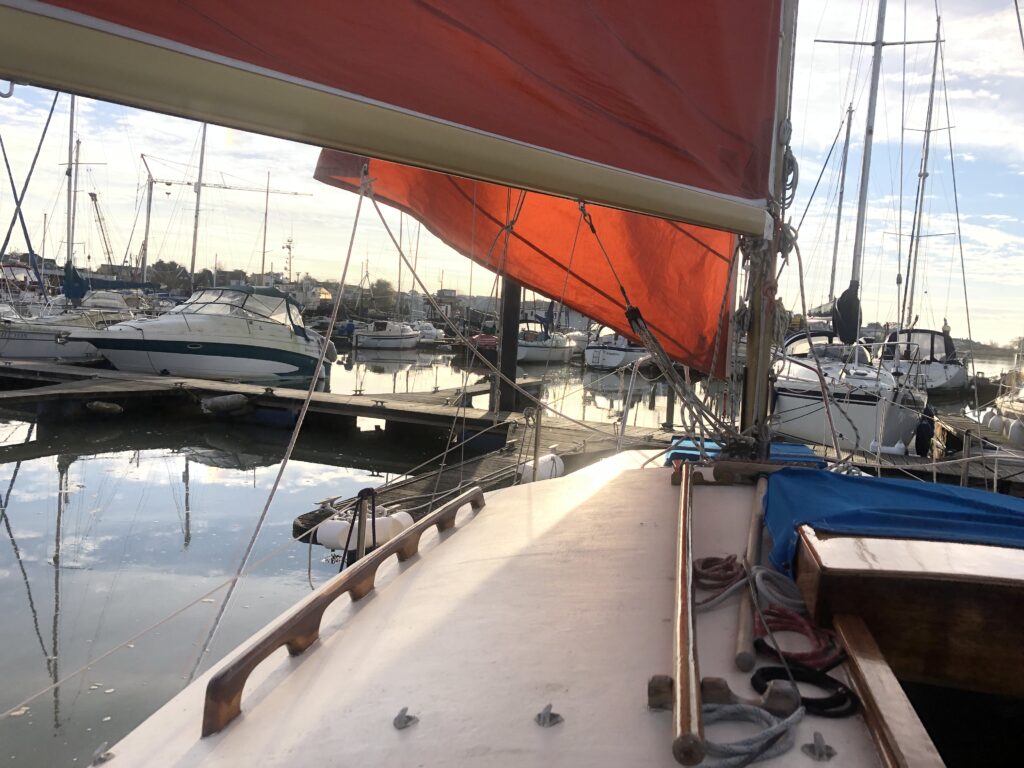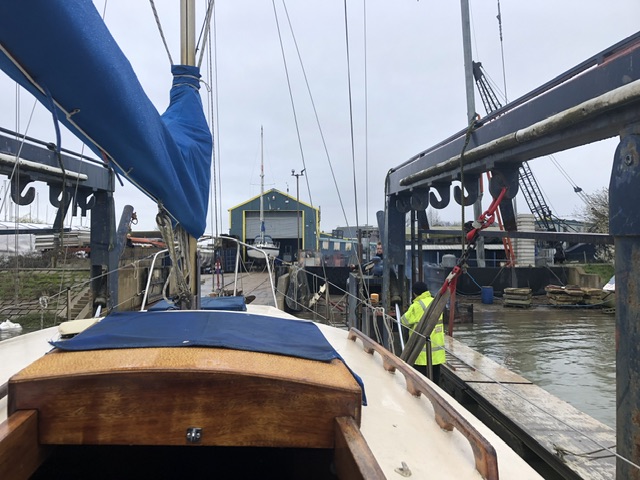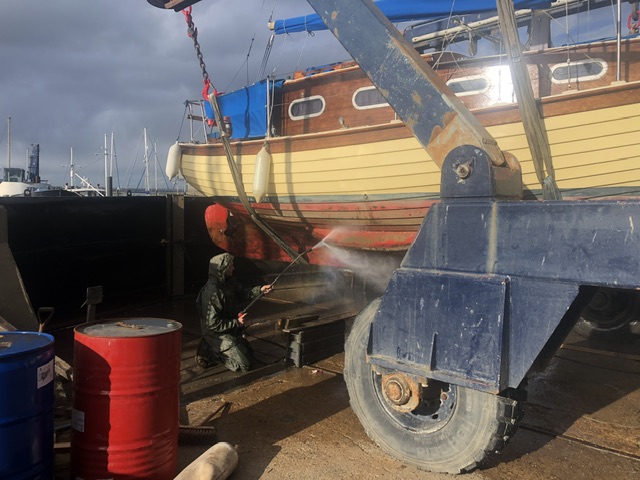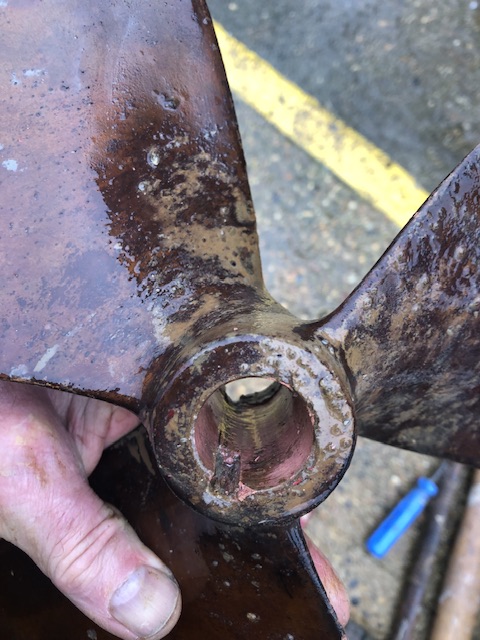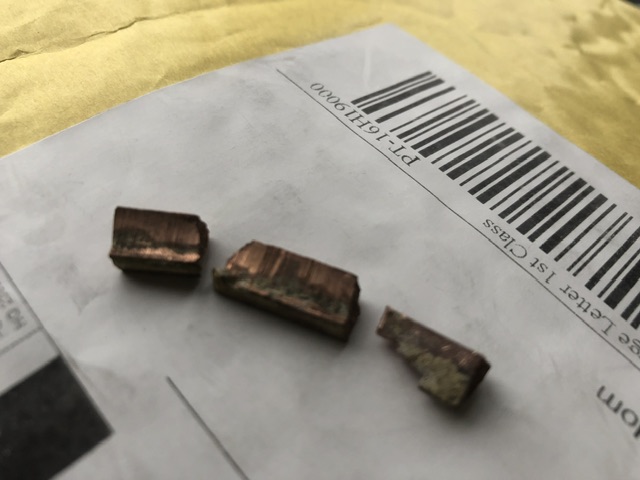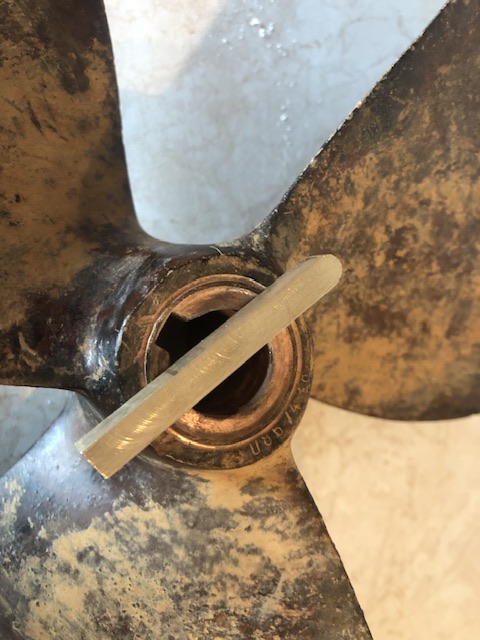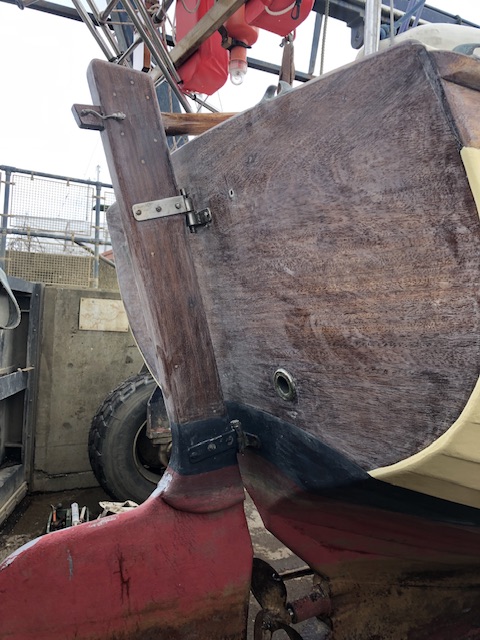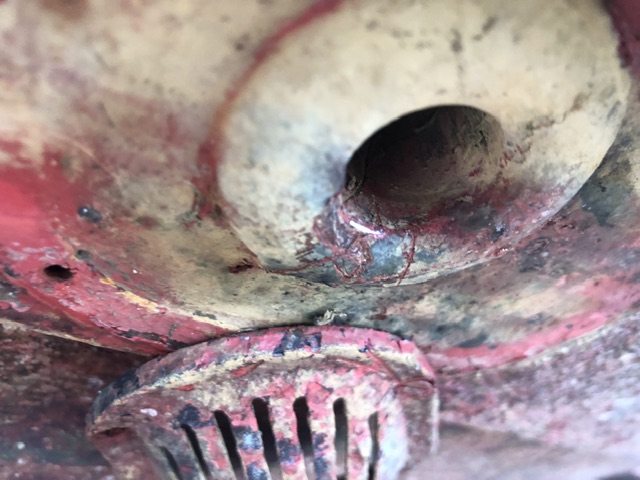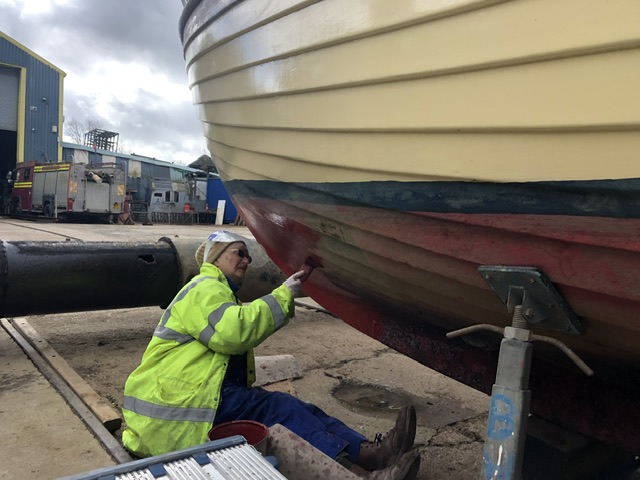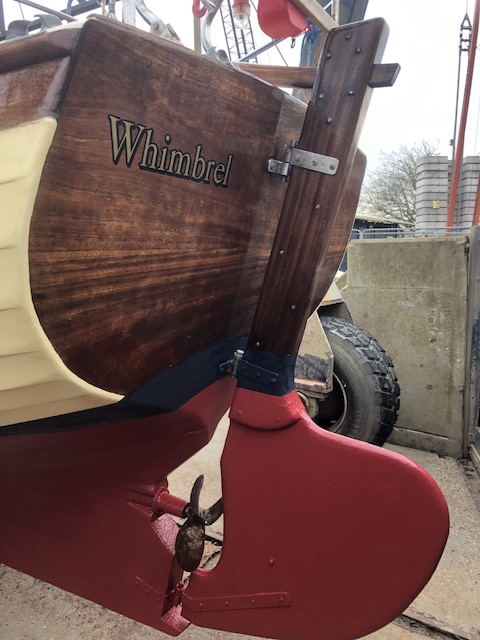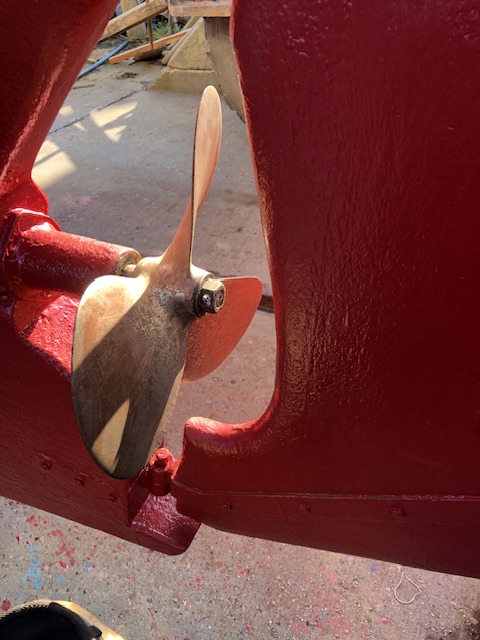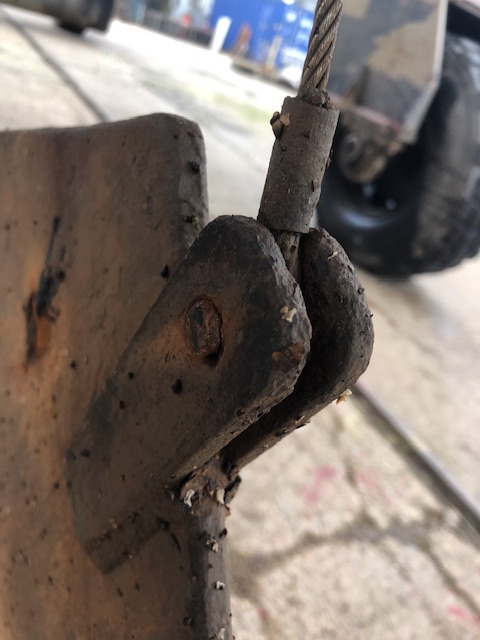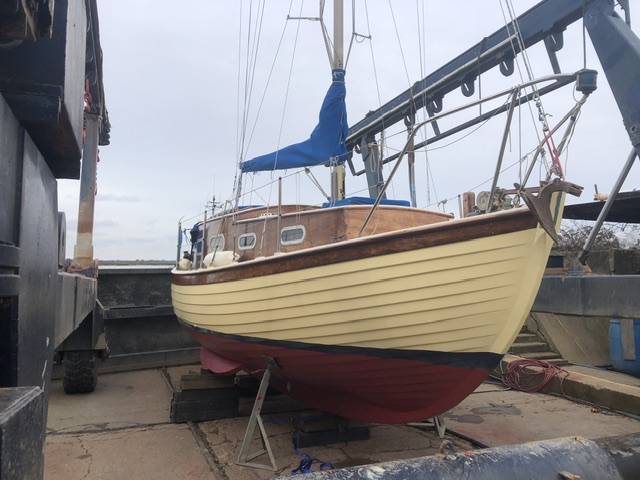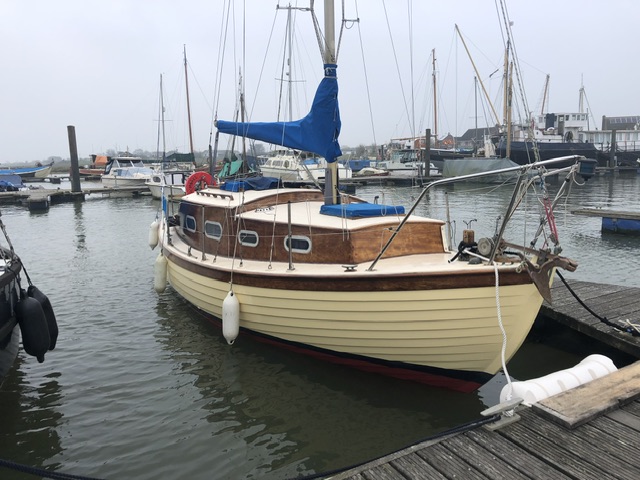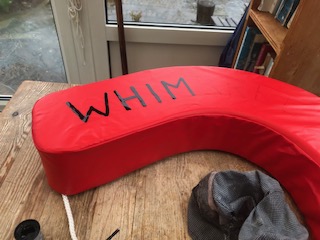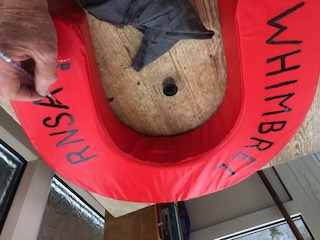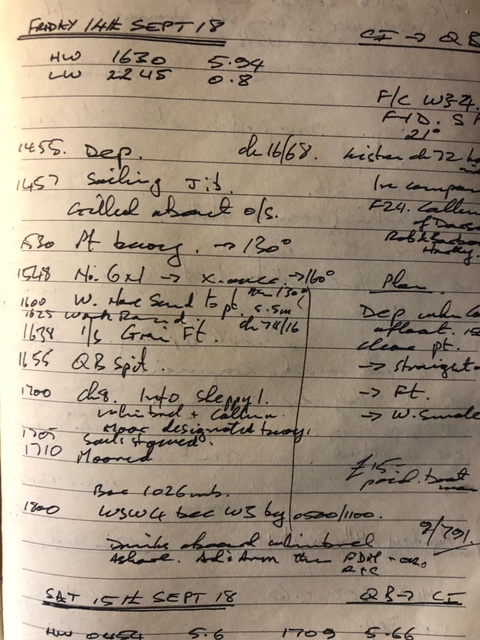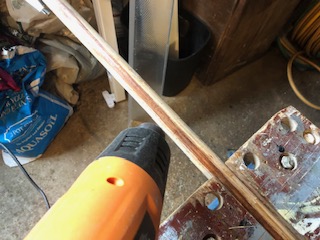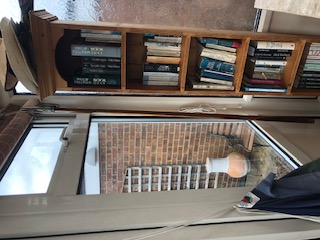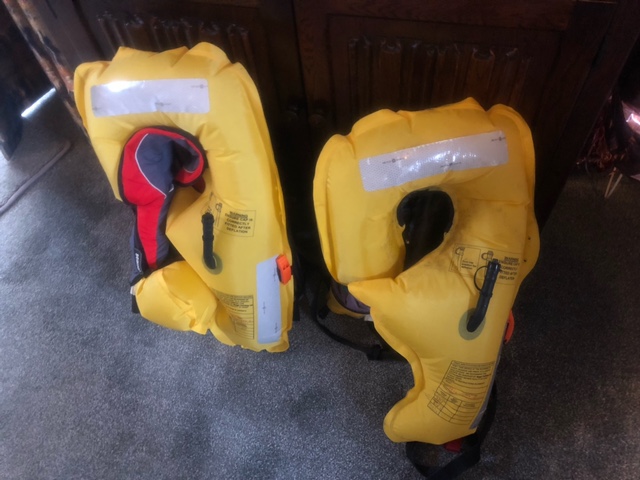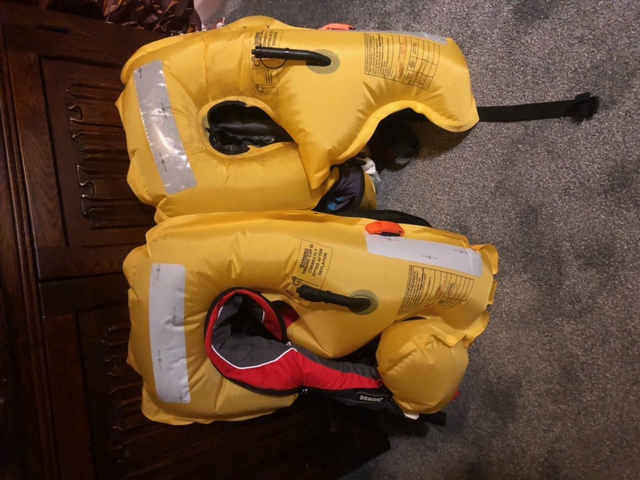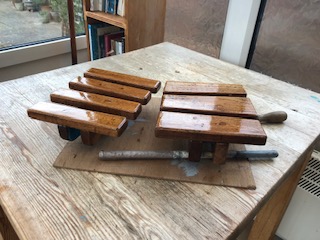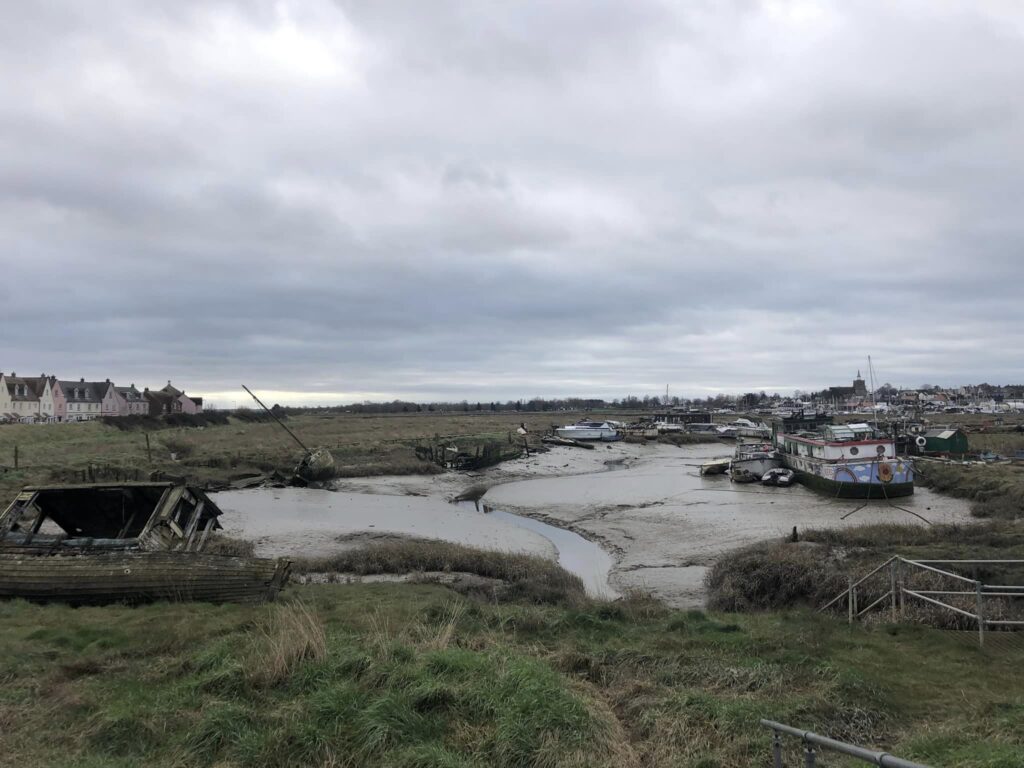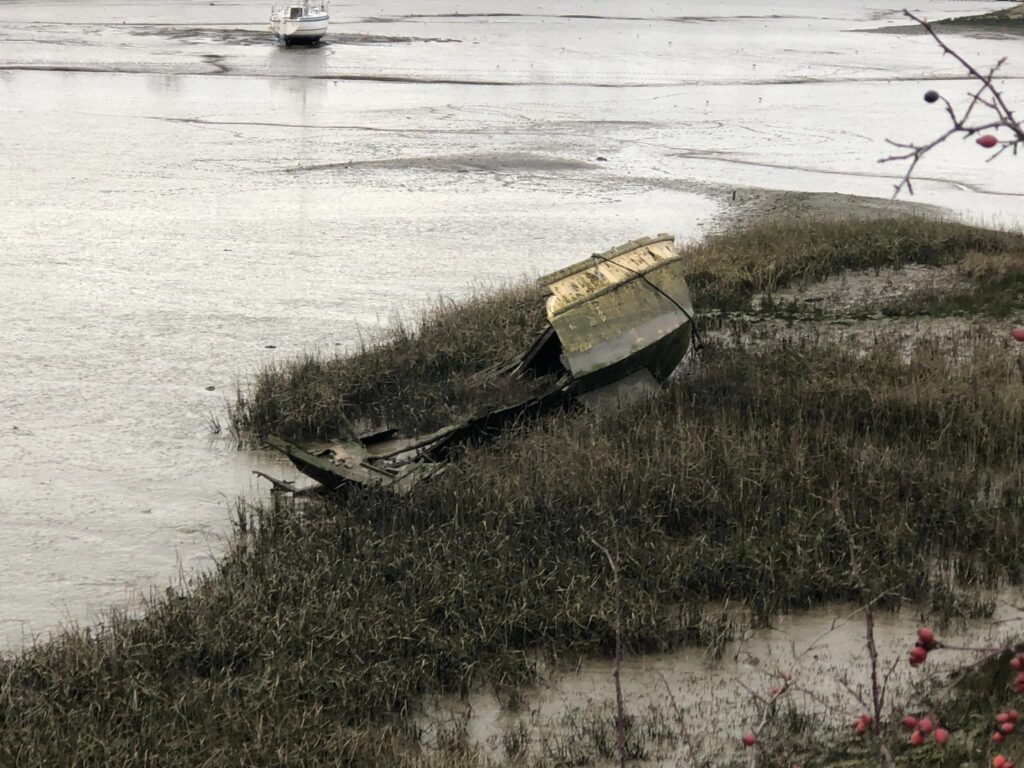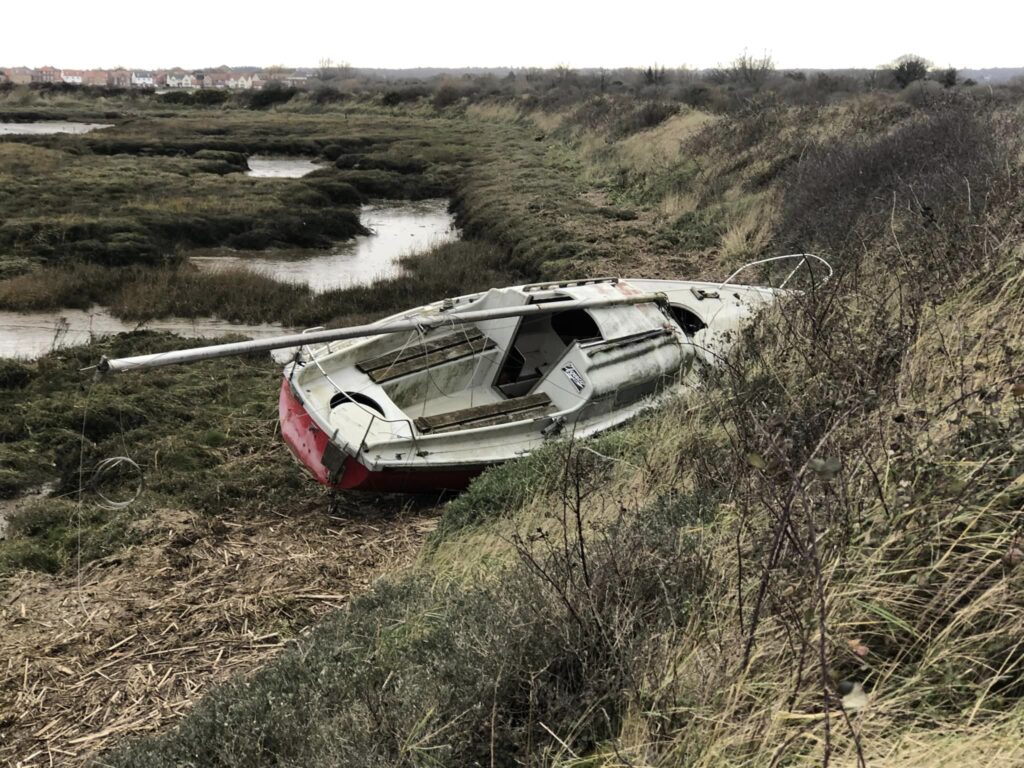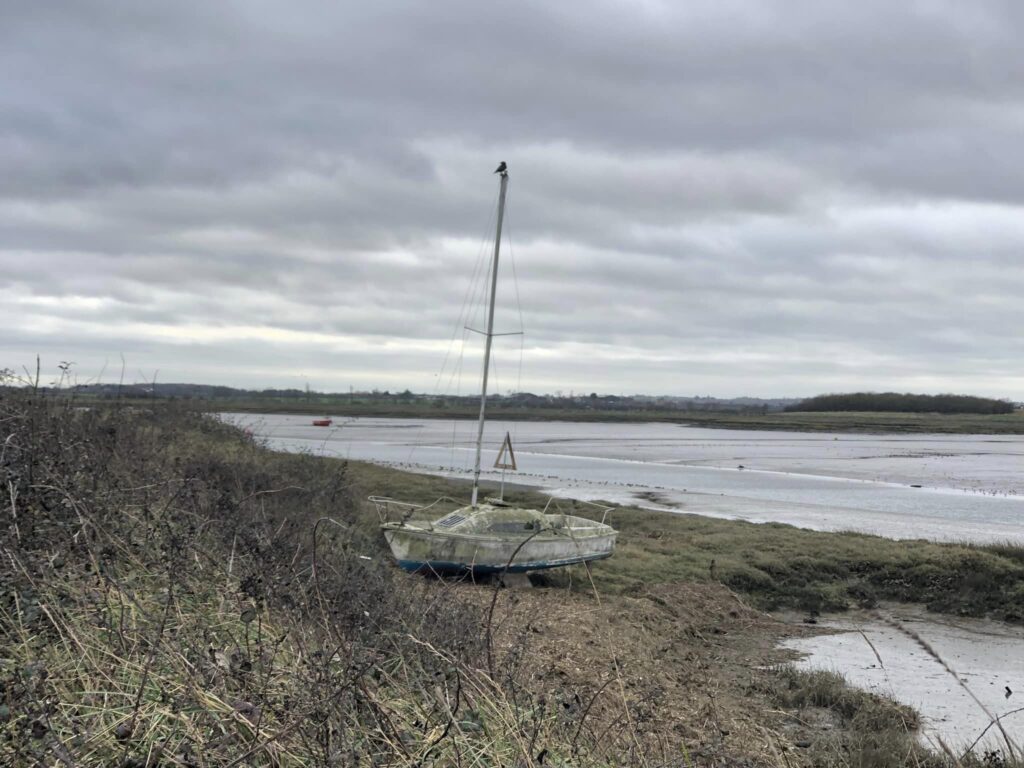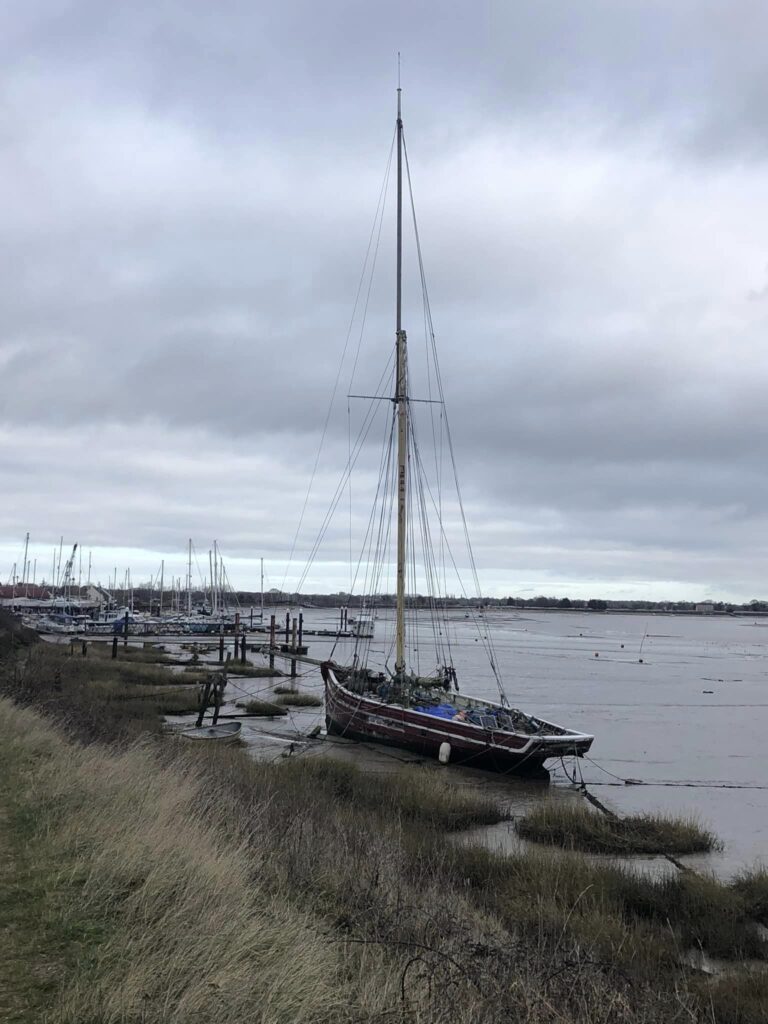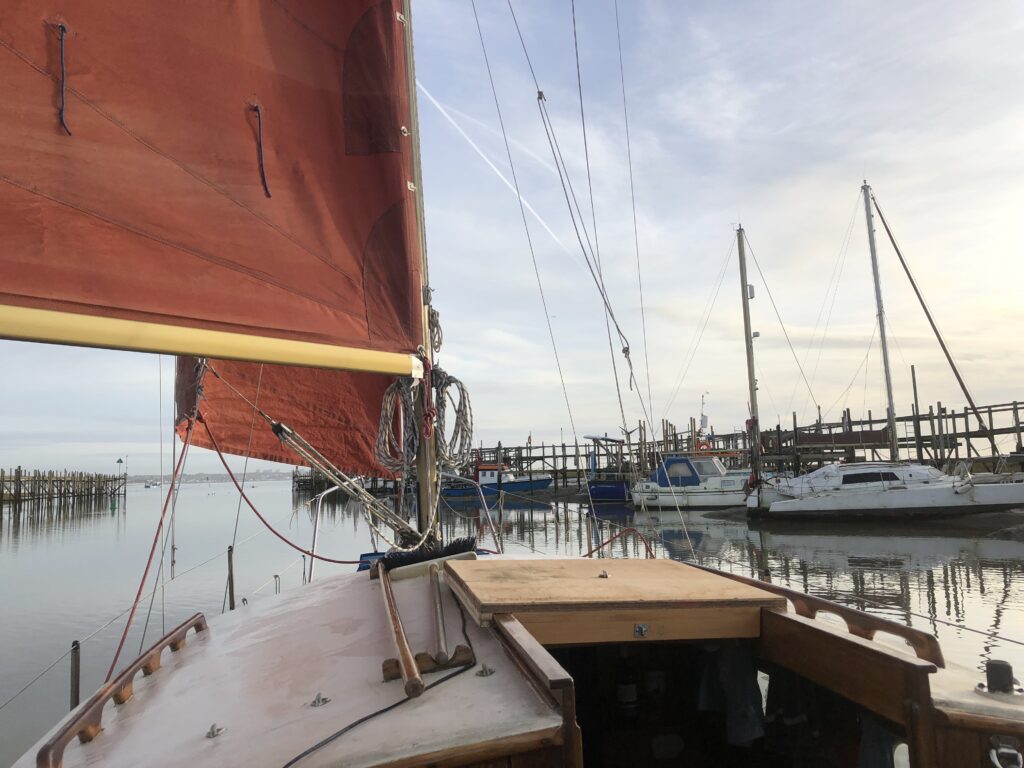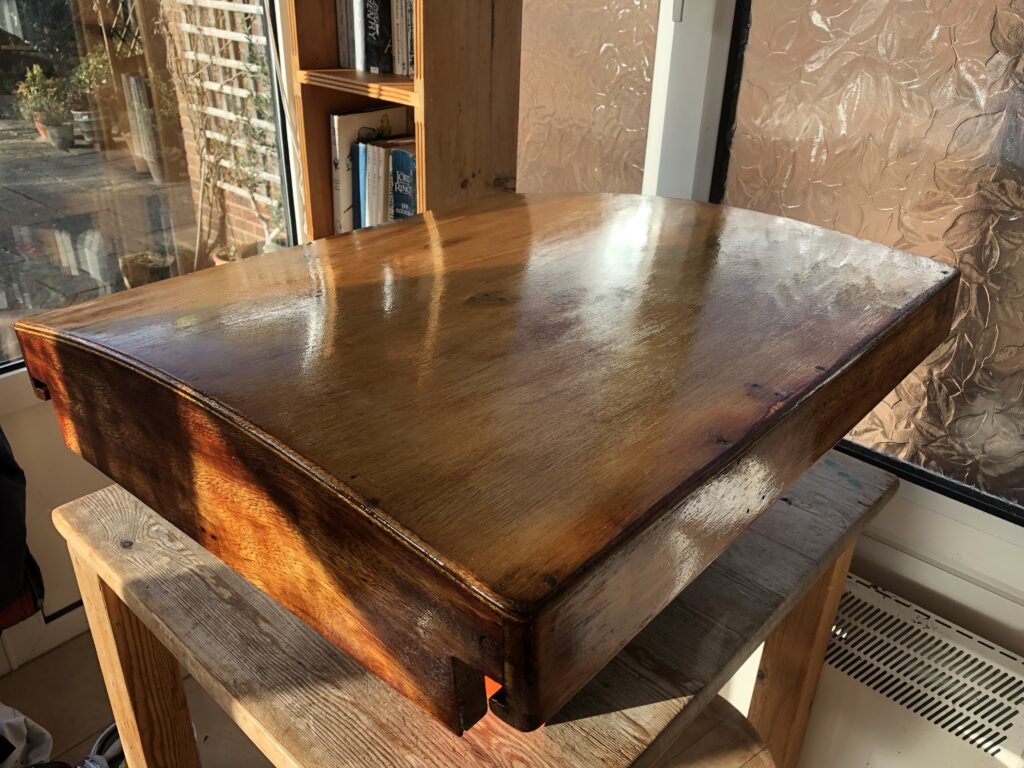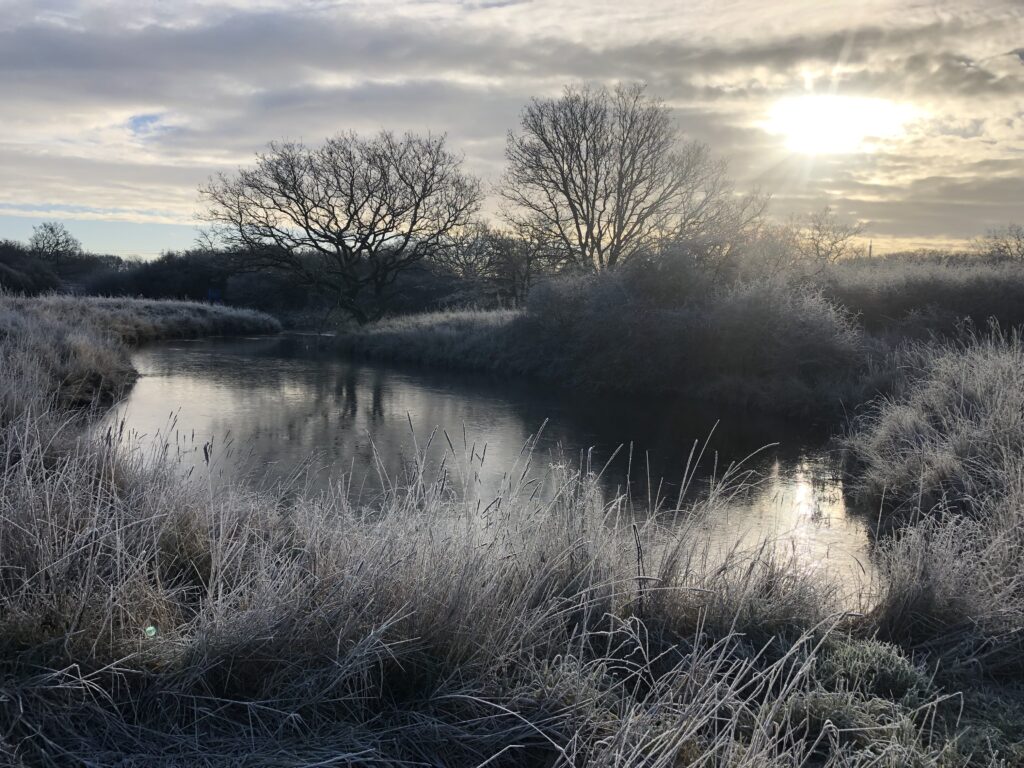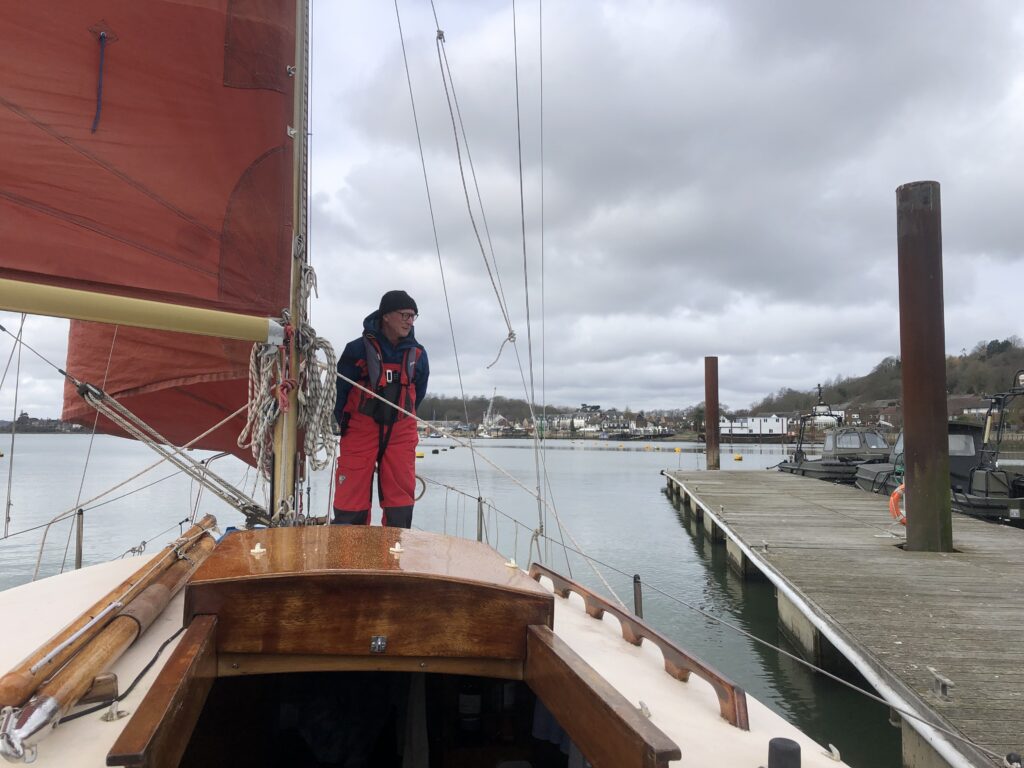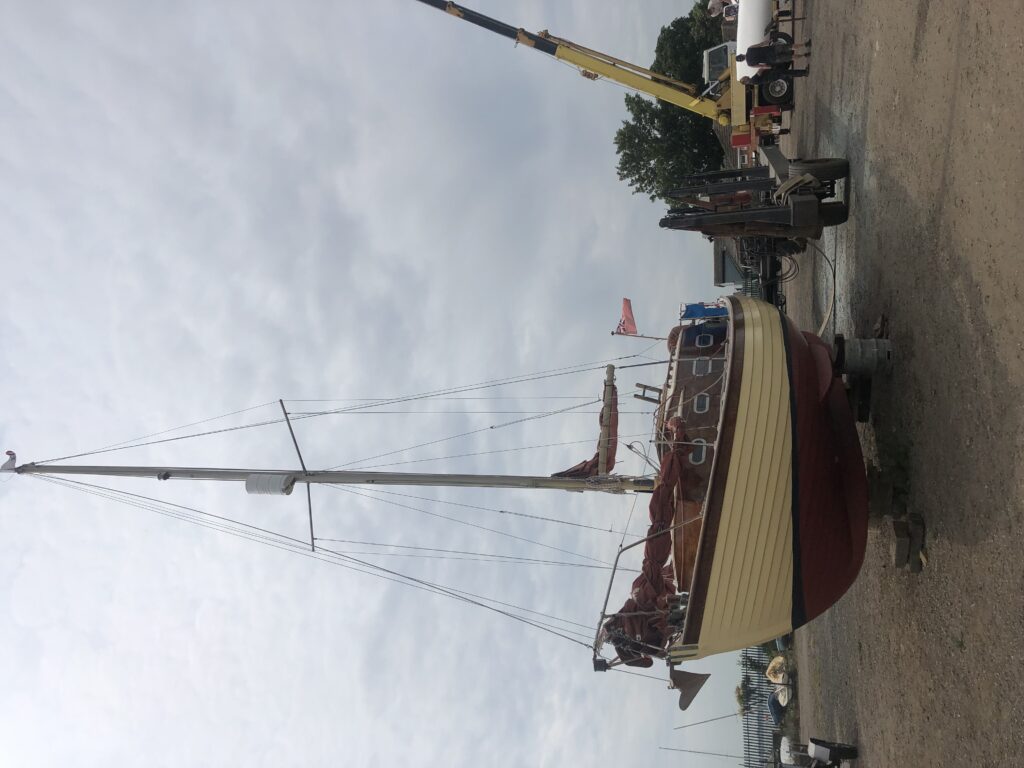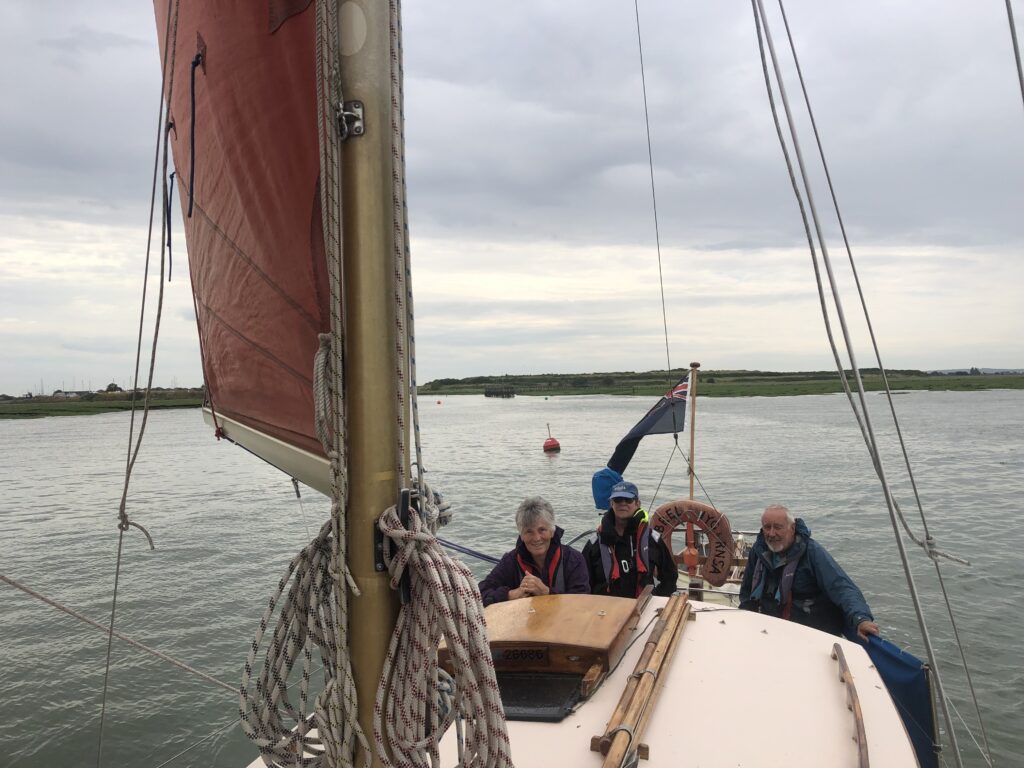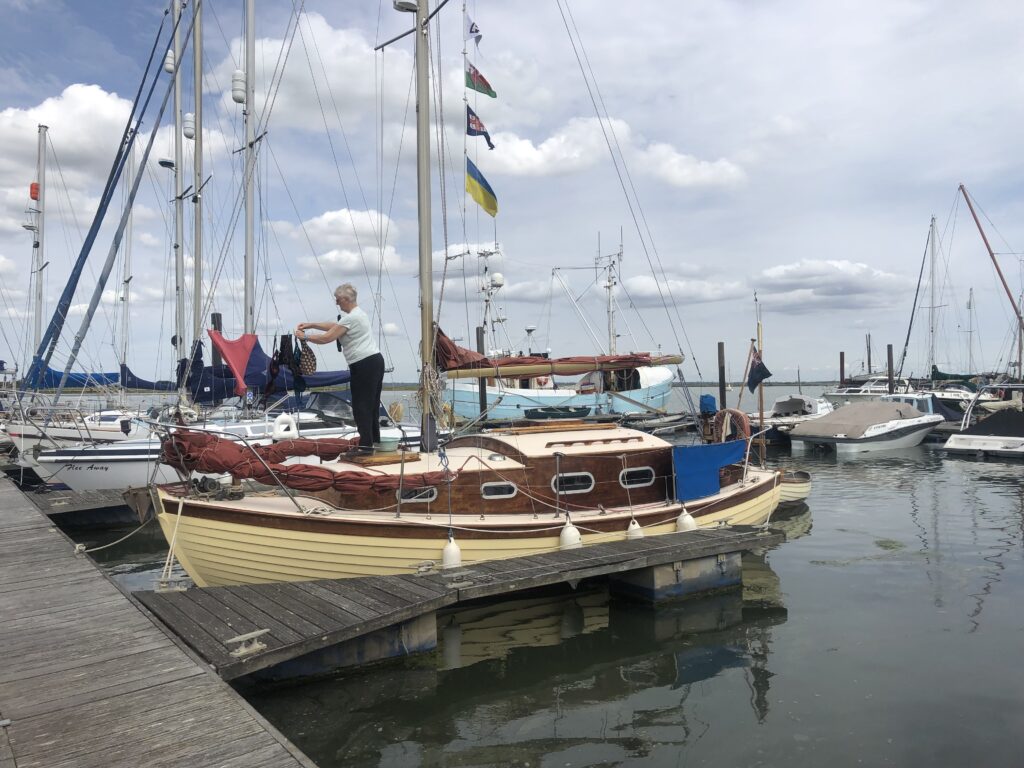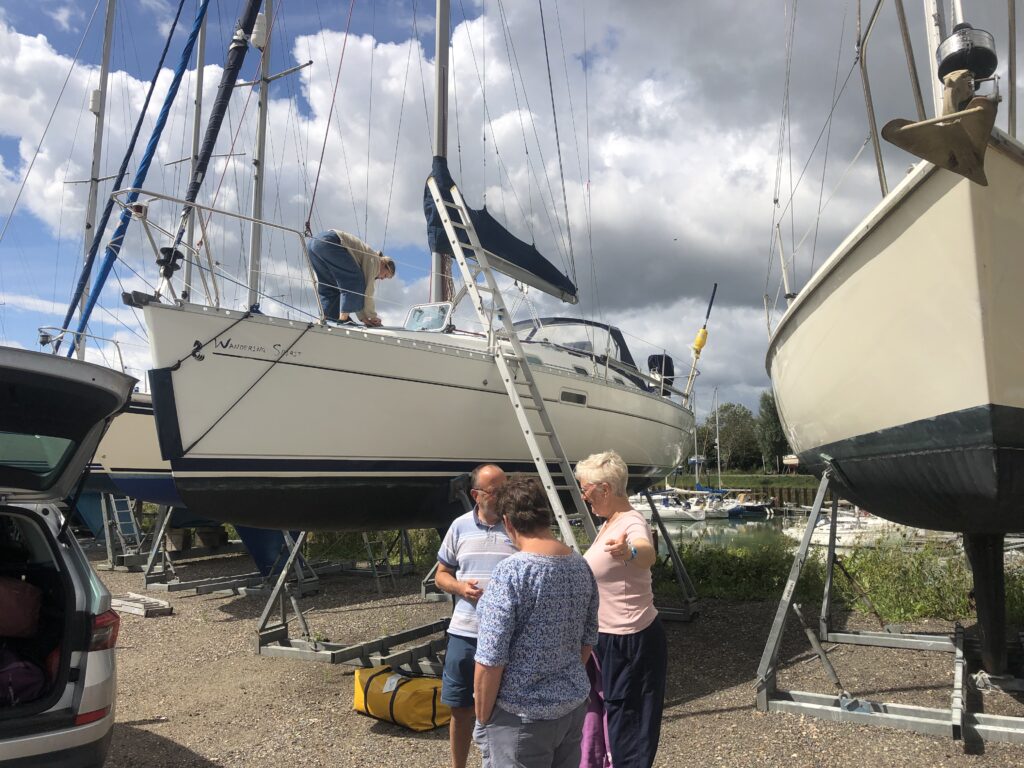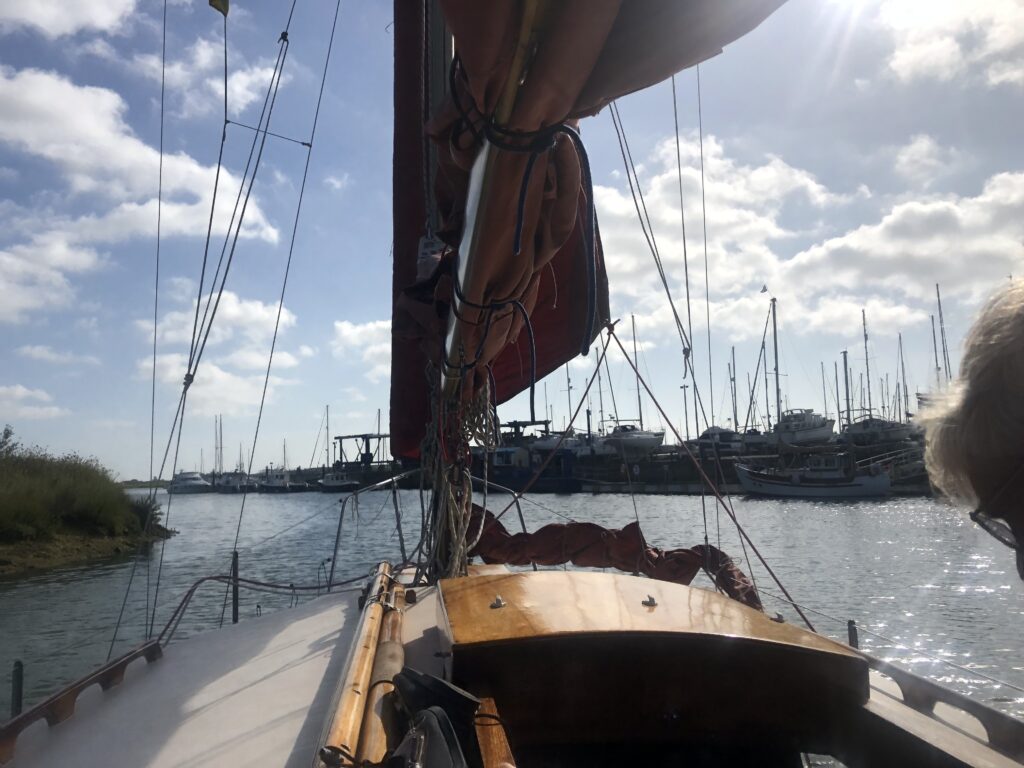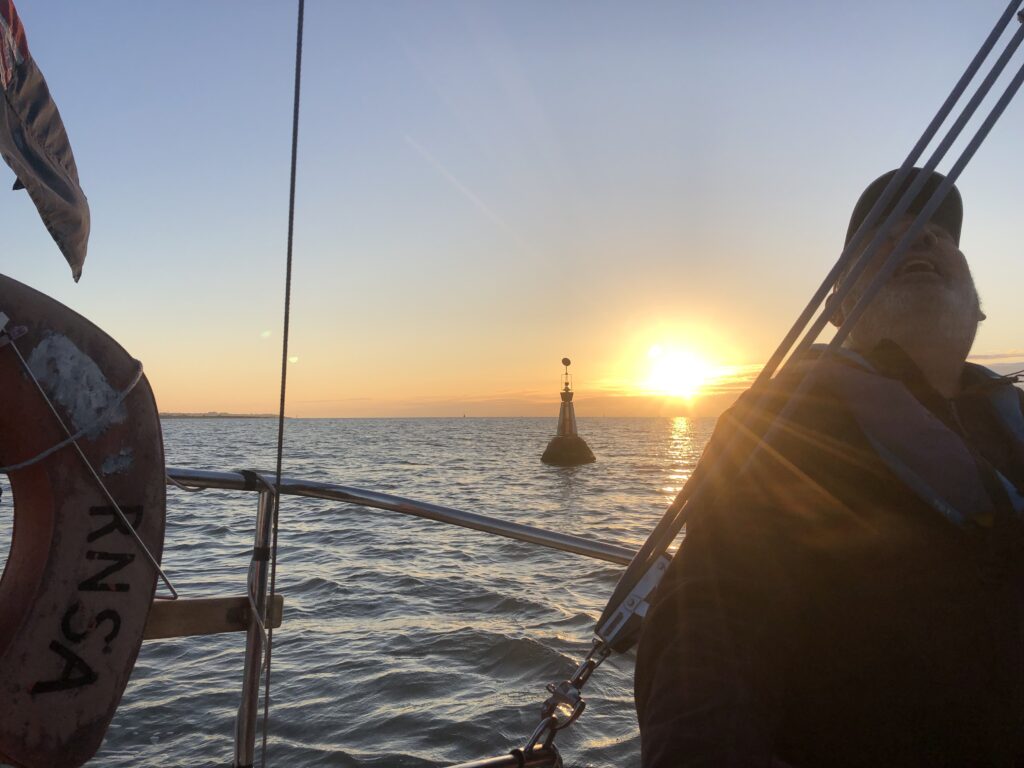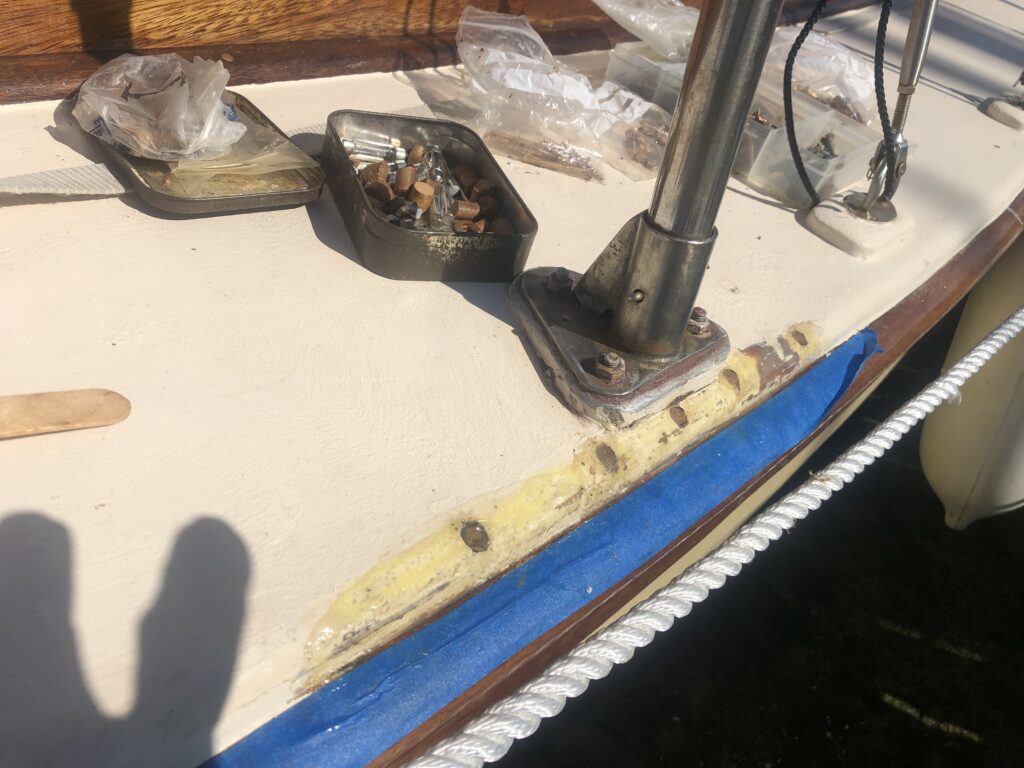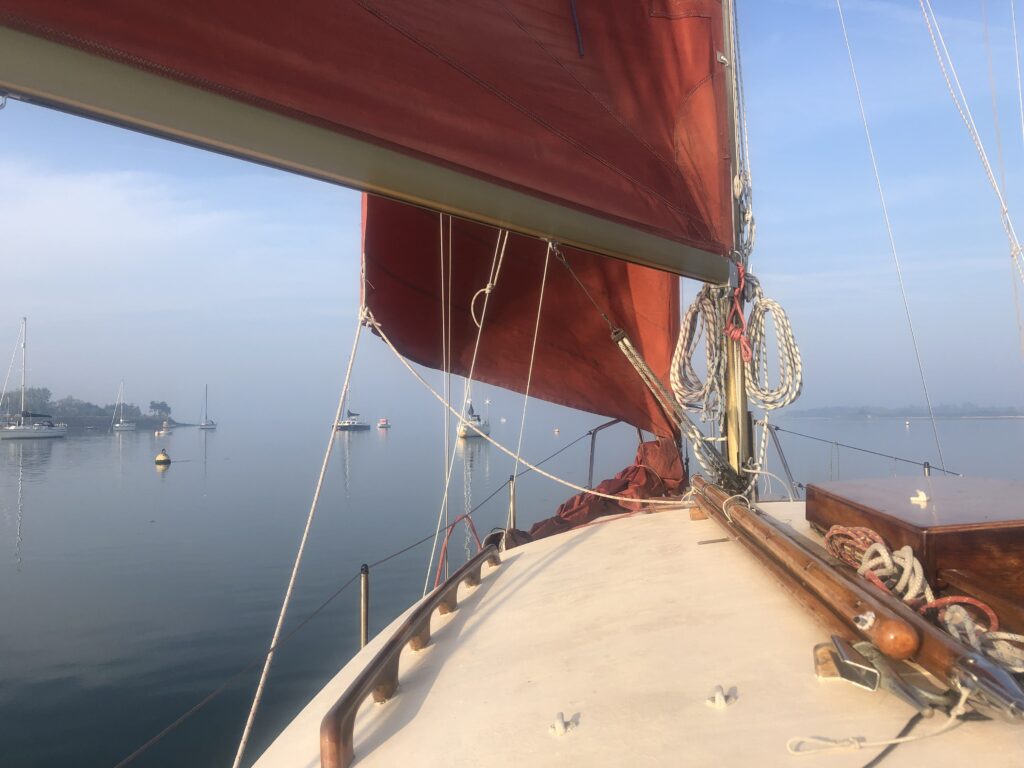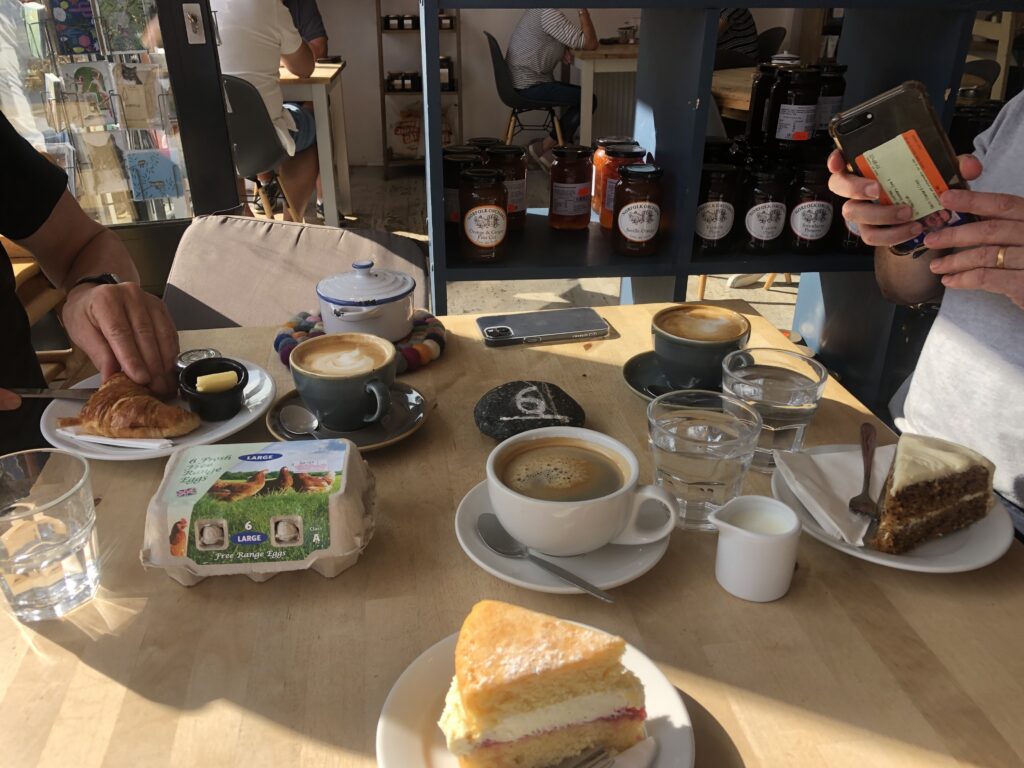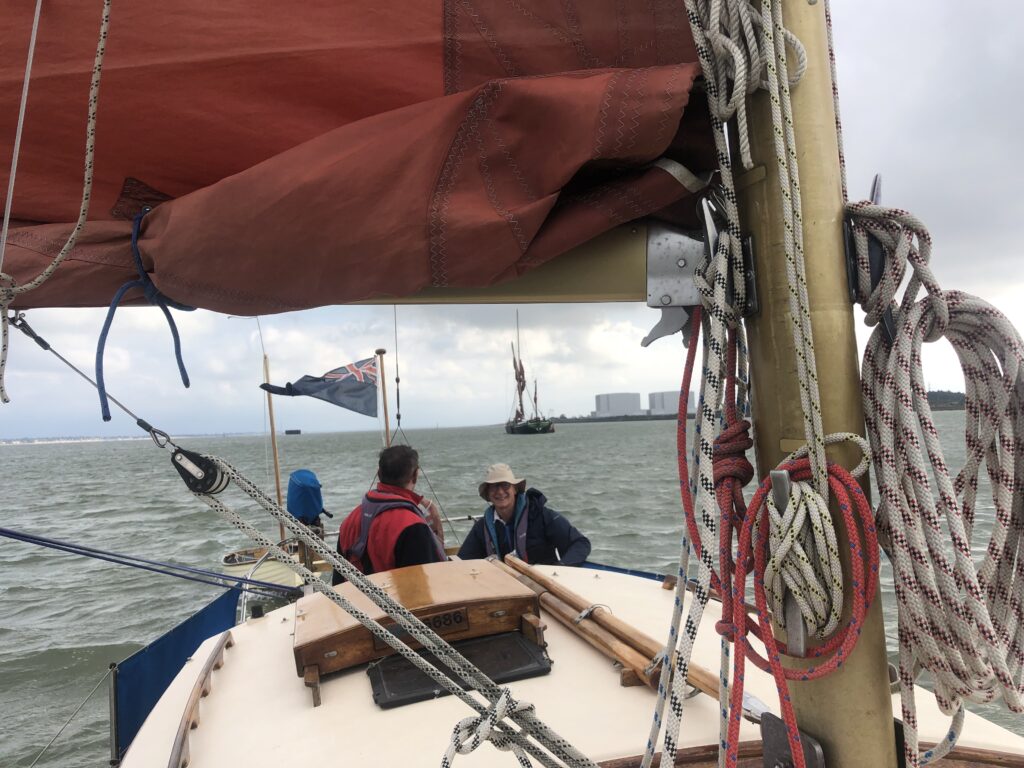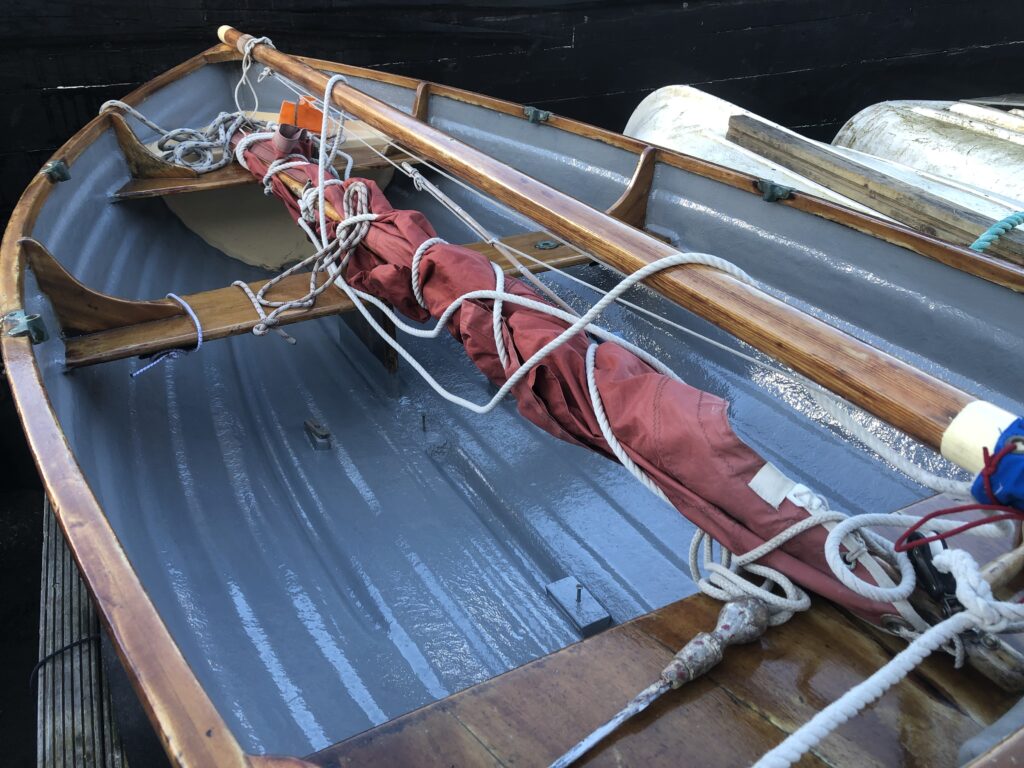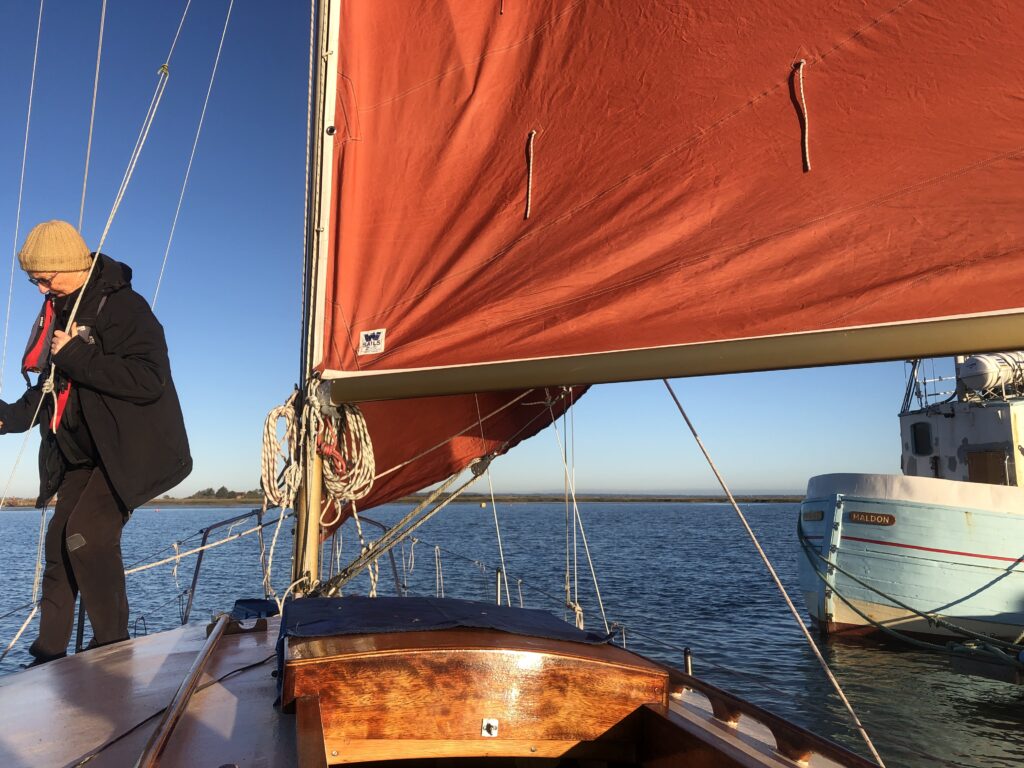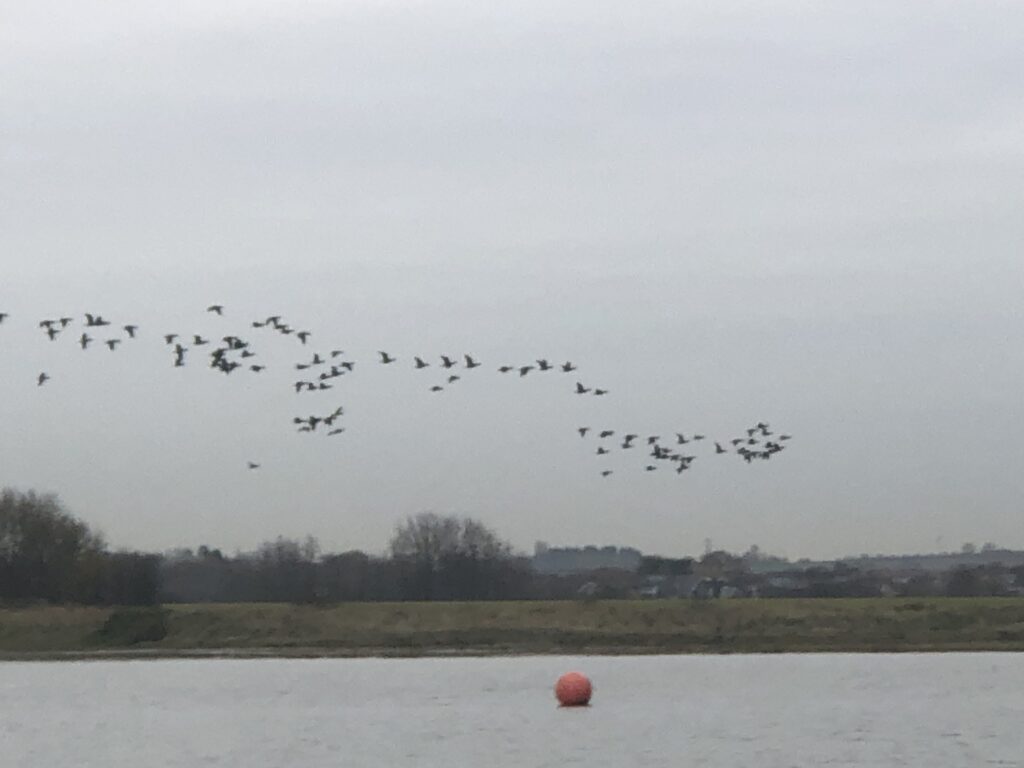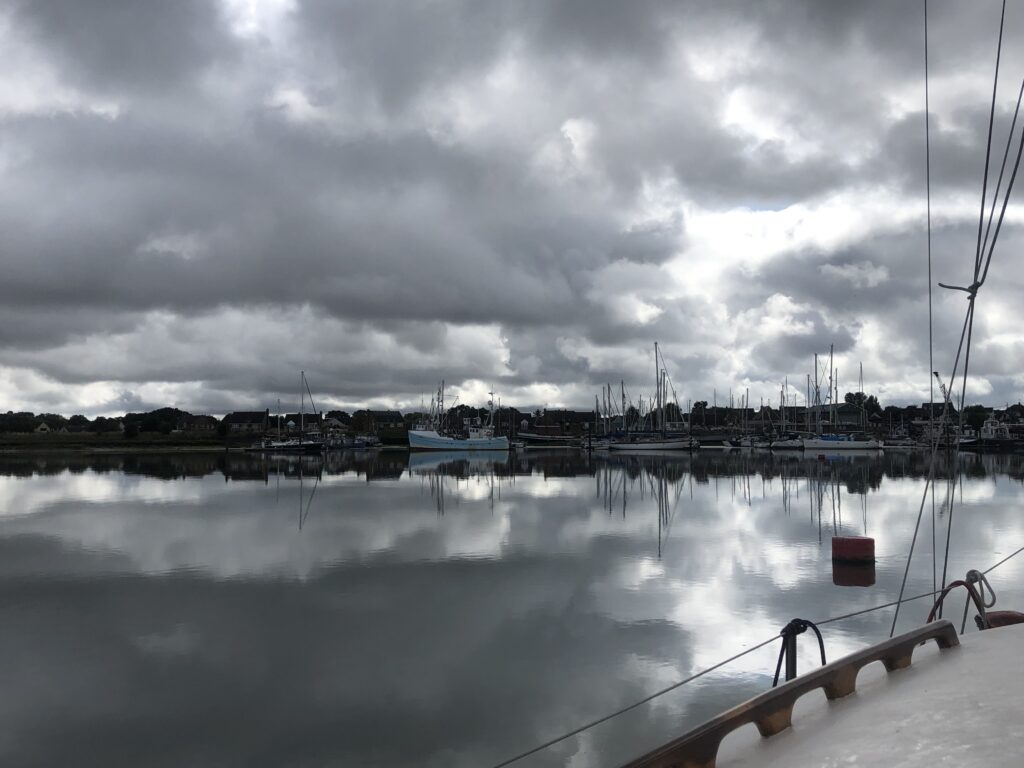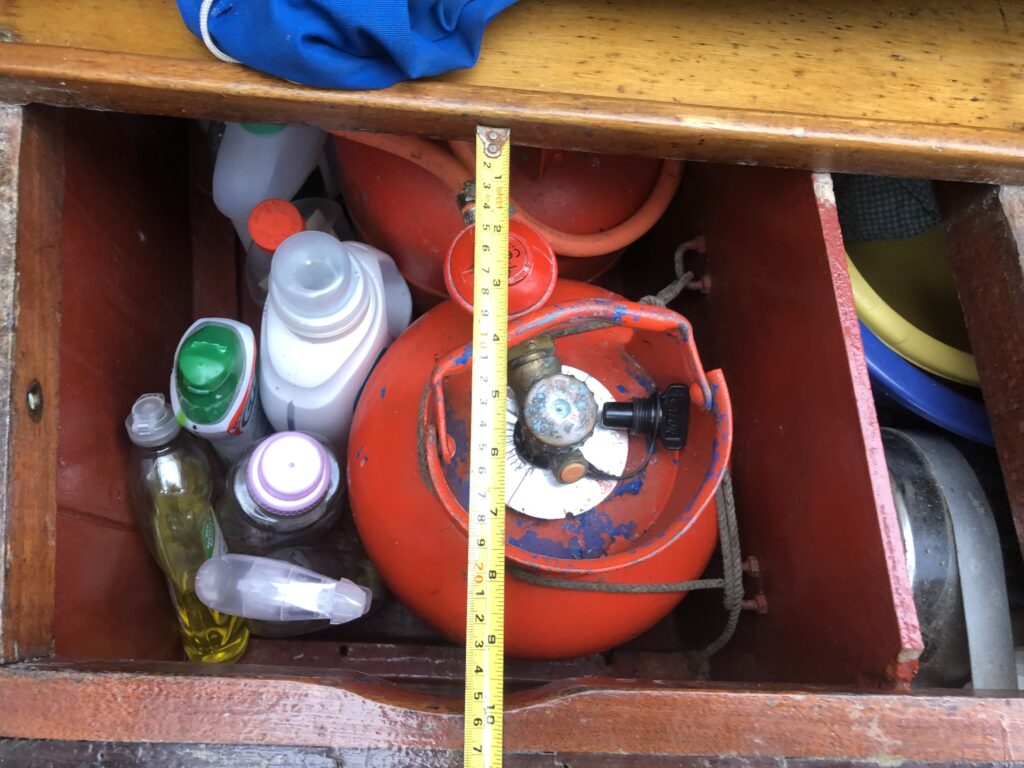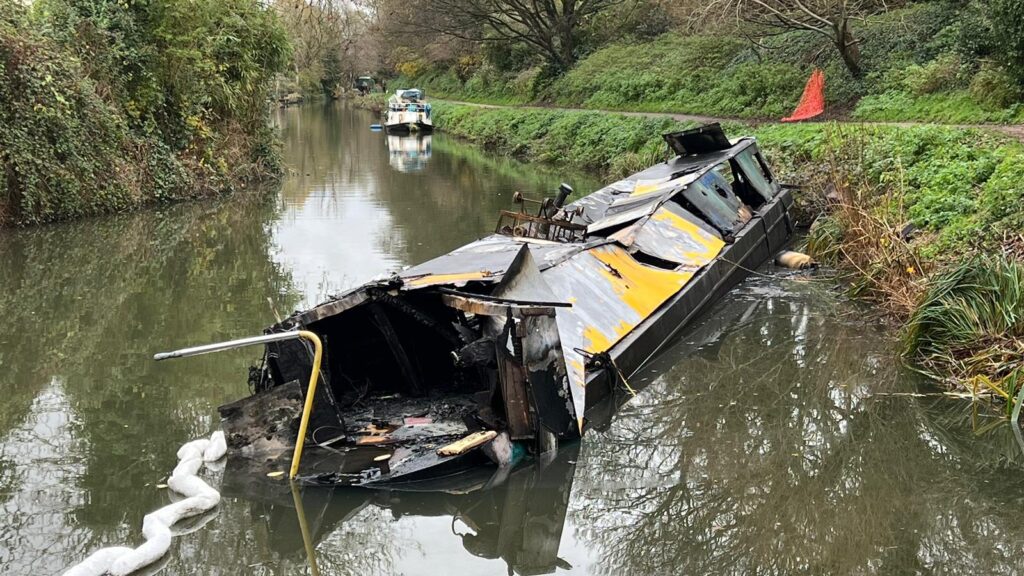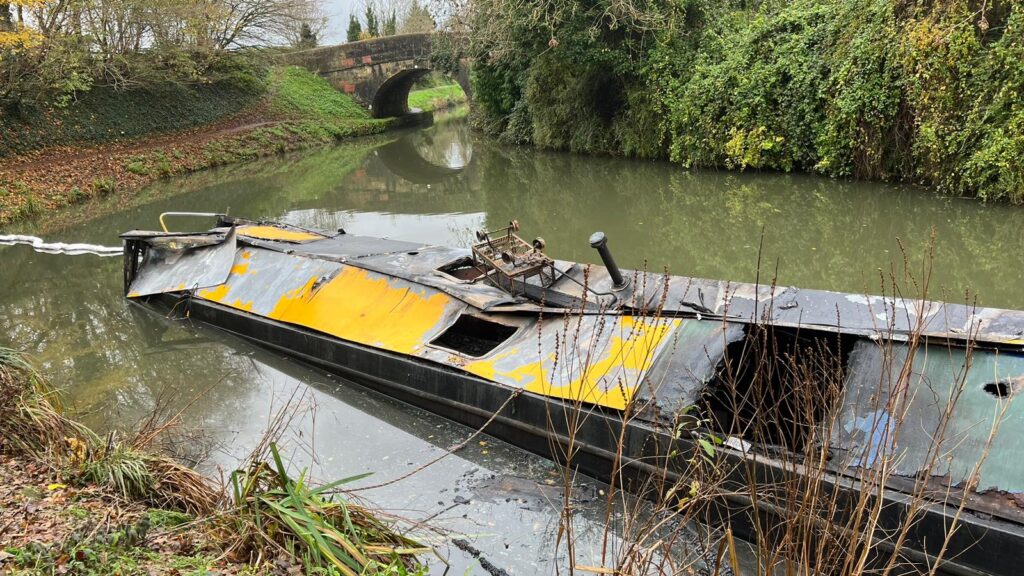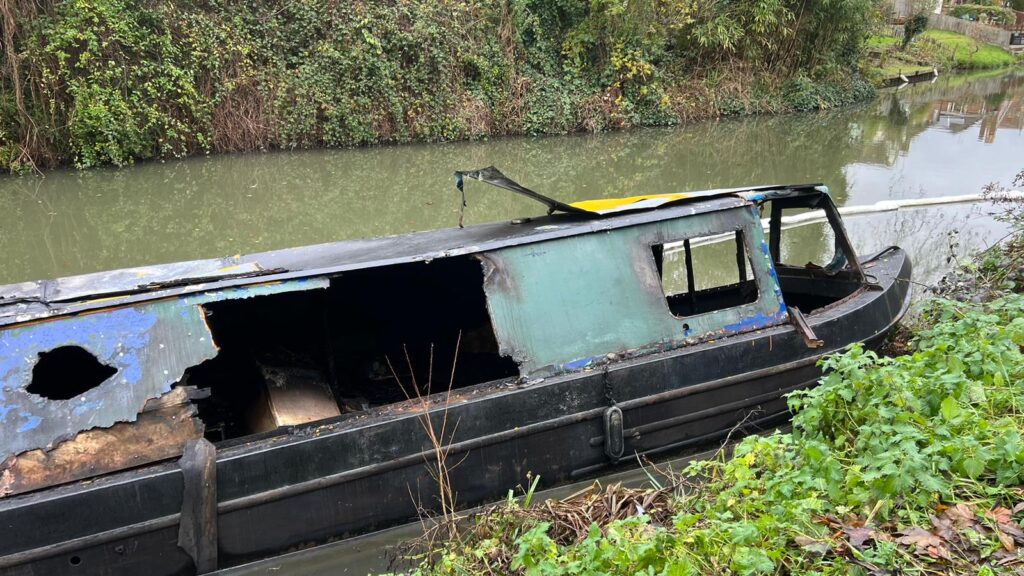Ditch-crawler & Mate’s Whimbrel launched forty years ago…
The story of how we decided to purchase a new build Finesse 24 is told about in Chapter 2 of my book, ‘The Jottings of a Thames Estuary Ditch-crawler’ published by Amberley Publishing, 2011. It remains in print and available.
The story also wraps up the history of the Finesse classes after Alan Platt (and Shirley) graciously agreed to sit and talk to me about how it all began. It was and remains a fascinating tale.
My Mate’s seal of approval upon a first visit to the yard can be put in a nutshell: ‘Yes…’ after we had toured a couple of craft chocked up around the yard in its woodland setting in Daws Heath, Essex.
The boat had all the parameters that had been discussed, apart from: a walk round bed (nearly), a deep bath, a washing machine and a power shower… Of course, these were all a joke!
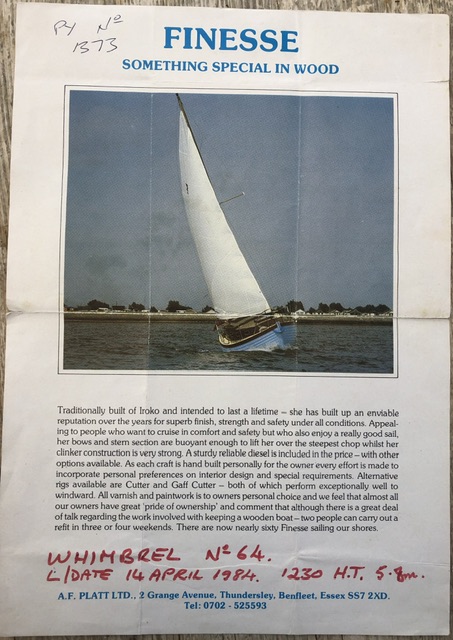
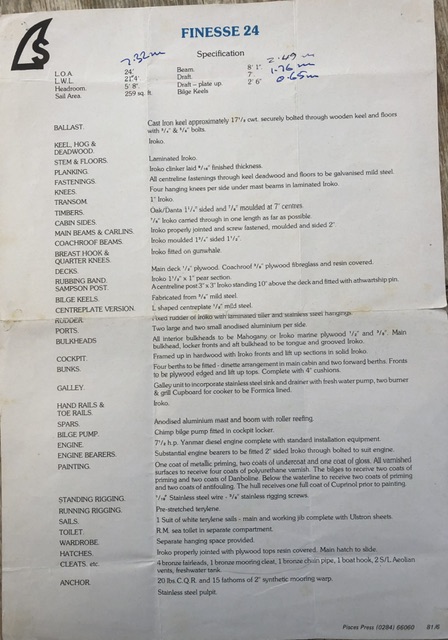
I had explained to Alan and Shirley that I was on the point of selling our Yachting World Peoples Boat and would contact as soon as sold. I was also due back to sea – in the latter point, I was sent to a ship that disappeared off to the Caribbean for the whole time the boat was being built!
I seem to remember we lost a sale and then one Sunday lunch time received a call from a chap to say he wanted the boat. After a visit, a price was agreed. Within a week we were boat-less!
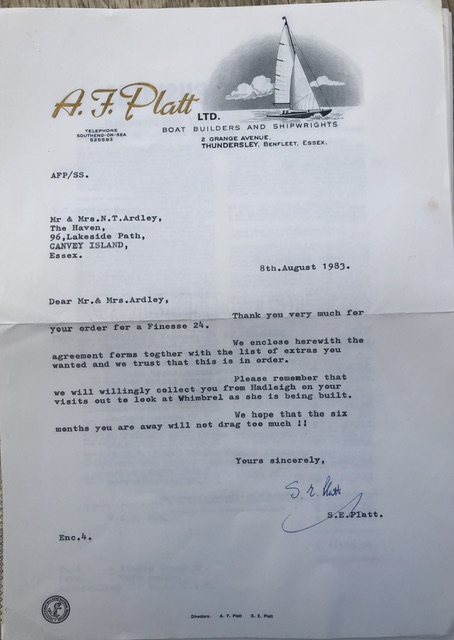
Note: offer to collect from Hadleigh…
Alan and Shirley were delighted with our news of the sale and our definite order…
Along with the order confirmation was a comment from Shirley offering to pick Christobel up from Hadleigh – she had to get a bus from our then home on Canvey Island (where she was a school teacher) and we did not at the time have a car. Our boy was buggy-bound… It was an offer that has had an enduring appreciation.
A build/sail number was given to us and we gave over the boat’s future name, Whimbrel, and colour scheme, which has remained unchanged from her build 41 years ago. A whimbrel is a northern curlew. It is smaller than the one generally seen with a slightly shorter bill. During some winters they can be seen well south of their normal breeding areas up along the north coast of England and Scotland.
A list of pre-build extras was agreed and with A F Platt Ltd and the final build total. It was a tad more than our then house had been in 1977/8!
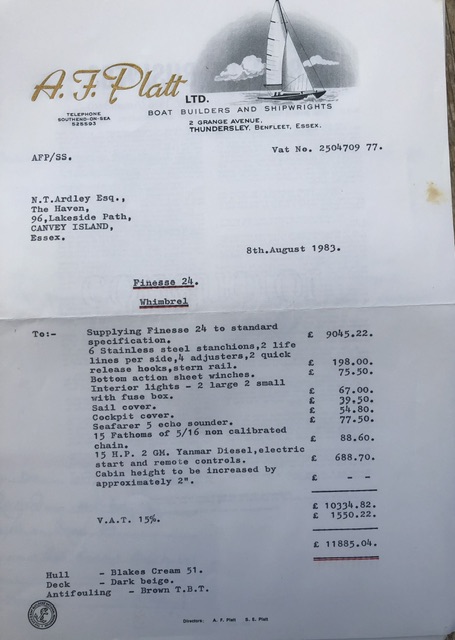
Of greatest importance to me was engine power: I had worked out using an equation from one of my engineering/ship design books that the single cylinder Yanmar being offered was at full whack to get to design hull speed. Diesels need to work hard, but!
We took out a Lombard Marine Mortgage for just over 60% of the boat price. I soon after gained a promotion and we paid it off within three years…
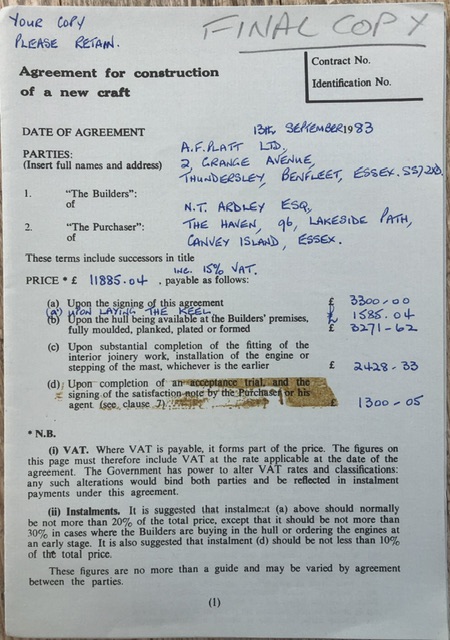
One of the things Christobel never really got her head round were the stage payments which she had to sign for.
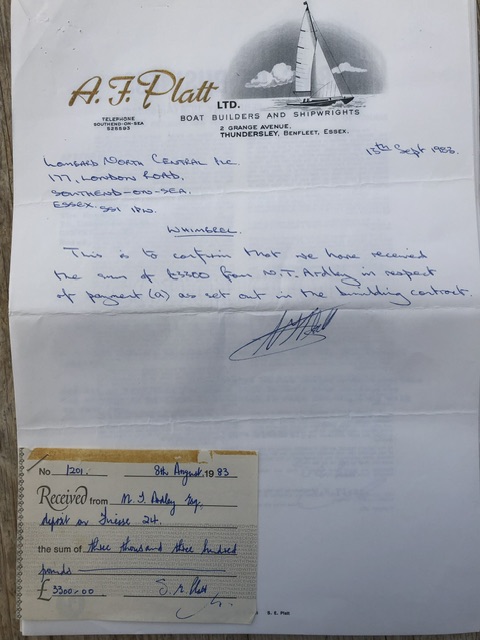
She wrote to me that the keel had been laid and had to witness before signing. She said ‘There was a piece of wood on the floor with sticks at each end…’ Bless!
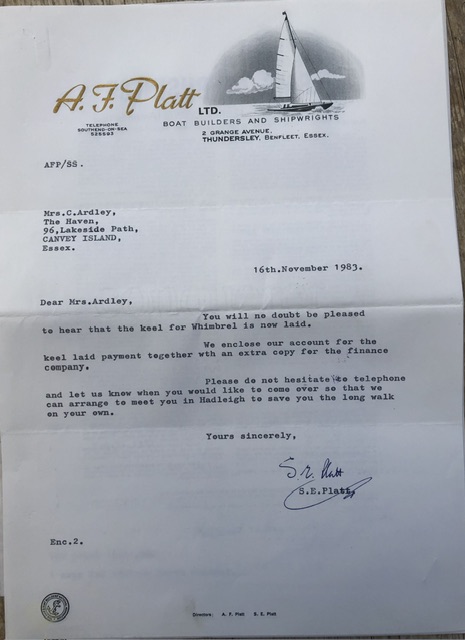
At the time Christobel had an old camera – this was before the advent of digital or camera phones – so the quality was a little poor, but she did her best.
Our photo files has the build under ‘1984’ but most are from the autumn/winter of 1983: the boat was finished by the end of February 1984.
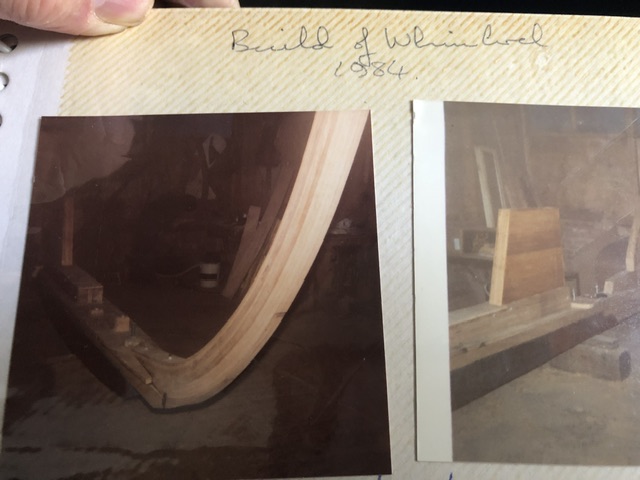
Keel laid… Note: 1983.
The paperwork arrived in ‘telling’us of completed stages quickly followed by the invoices.
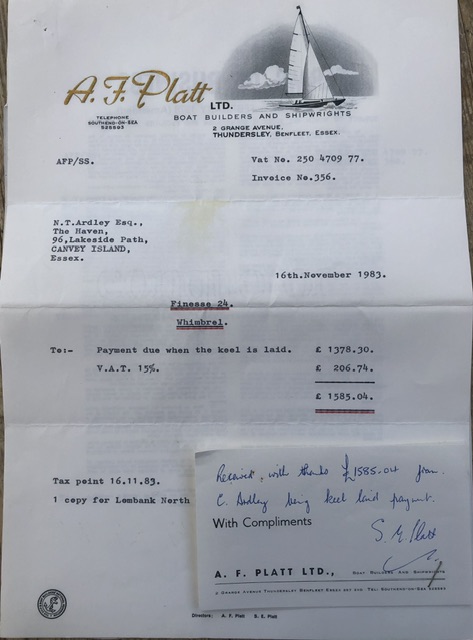
I have copied all the keel ones, but just the invoices of following stages. The bald simplicity states the case: ‘Payment due when keel is laid…’
The next was a big jump: ‘Payment due on completion of planking…’ Thgis must have been completed before Christmas for much structure was in by my Mate’s inspection visit.
At this point the boat’s hull was our Whimbrel!
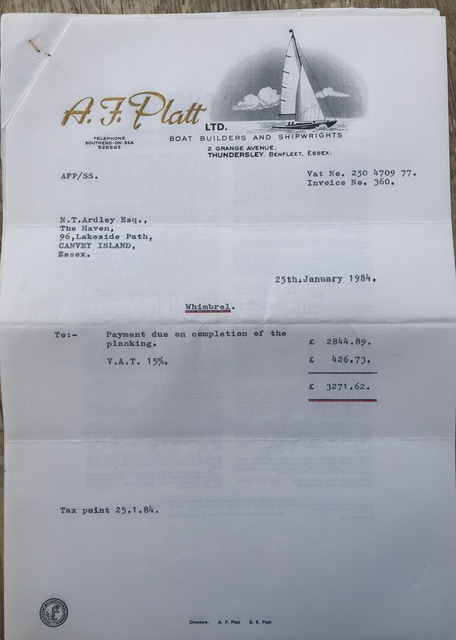
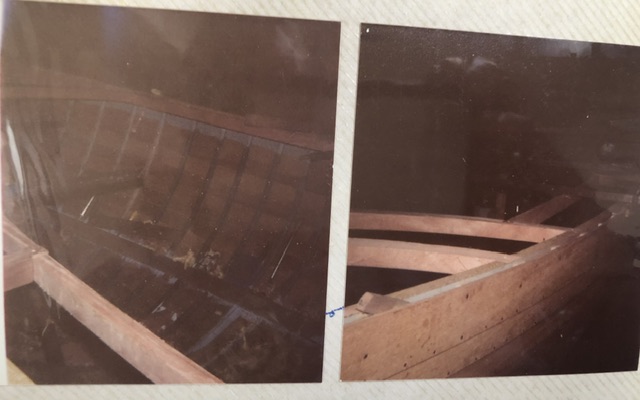
After planking up and fitting the ribs, beam shelf, deck beams, carlings and the longitudinals for the cabin sides, Christobel visited and took a few pictures… It wouldn’t be long before the cabin sides were fitted with its associated coach roof beams, but we do not have a record of this.
The next payment came close towards the end, just a month before the delivery/launch date. This was for installation of the engine: surely the structural and finishing work must have been completed below and in cockpit by then.
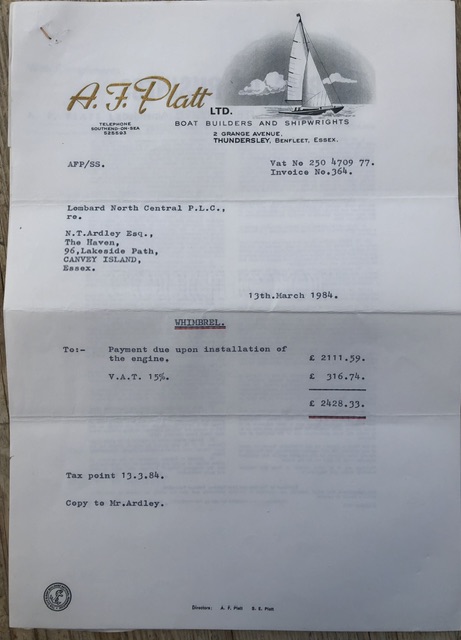
I arrived home from the ship I was on just a week or so before the boat was contracted to be launched, although Alan Platt was flexible with this in consideration to my job! Alan had spent his National Service years with the Royal Logistic Corp – afloat…
Launch Day was approaching very quickly, barely giving me time to get reacquainted with ‘home life’ and to get essentials aboard the new boat.
I found the boat outside the build shop with its mast up on the boat, lashed, ready for the launching. I had a good look around, stowed warps and fenders in the cockpit lockers and left the yard with a glow inside: this beautiful creation would be under our protection soon.
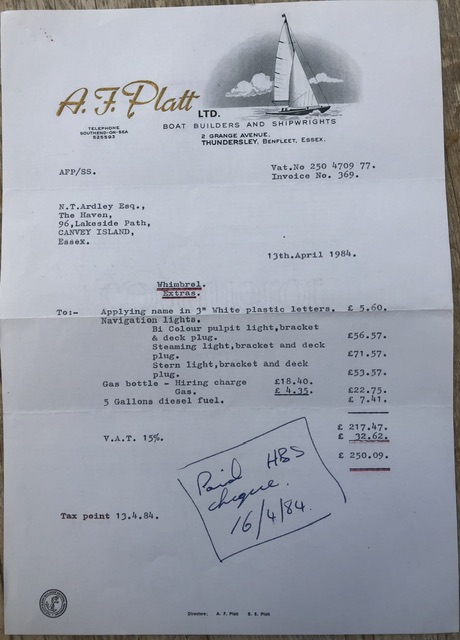
Strangely, I have no pictures, but this was before the advent of digital cameras, let alone iPhones. I had a good Pentax at the time so am nonplussed as to why not!!
Various family members came for the launching plus some family friends as we had a bit of a party afterwards.
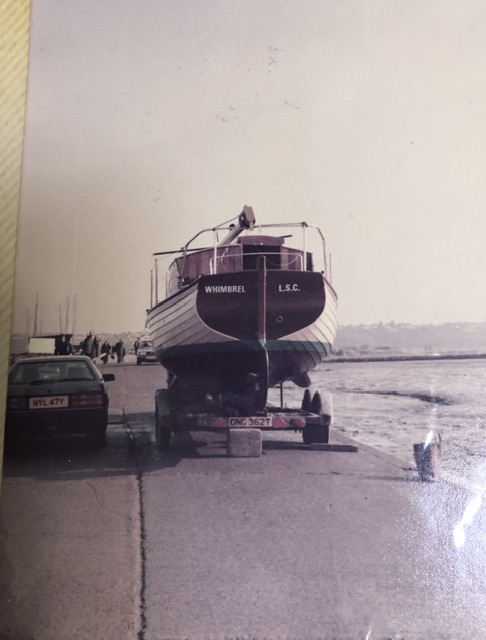
My sister who had a car acted as taxi to all. My youngest brother and his then girl friend were given the pleasure (honour) of being Whimbrel’s first crew.
The boat arrived on a trailer behind Alan’s landrover. It was bit by bit jacked off the trailer and left on low chocks. The tide was around the boat by the time the mast went up.
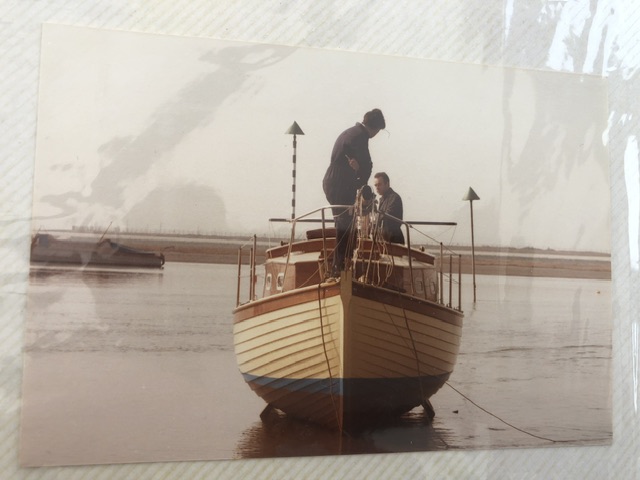
After the boat floated, I boarded and went off for a ‘delivery spin’ with Alan and another. Upon returning to the hard, Alan formally handed Whimbrel over, and that was that!
A bottle of fizz appeared and it was ceremoniously poured over the ship’s head, then my youngest brother and his then girlfriend boarded for passage to our berth in Smallgains Creek.
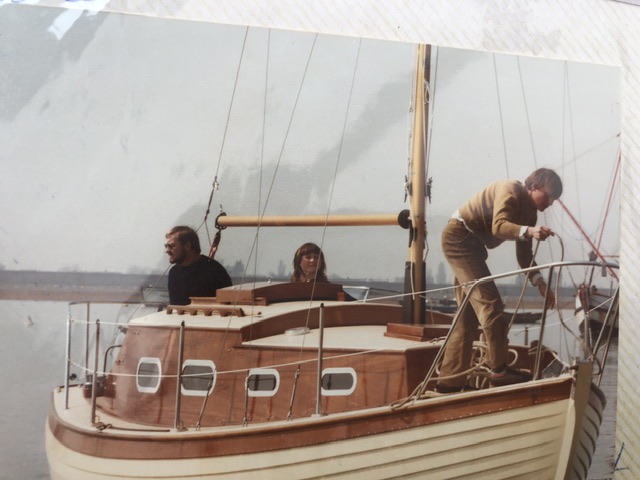
Going into our berth, I vaguely remember bumping the boat – no damage ensued. It was the first time in and first bump!
My leave period wasn’t long so we were soon off using Whimbrel as oft we could. Christobel was not teaching at the time and the boy not anywhere near school age – we were free.
Not long after her launch, Whimbrel was photographed by an owner of a Trident 24. A GRP boat with very close looks to a Finesse 24 – squatter and less roomy. The crew came alongside us at Queenborough and asked to come aboard – one asked, strangely, why the ribs weren’t fastened with grip fast nails! I have never forgotten his question. His experience ran to the Eventide type…
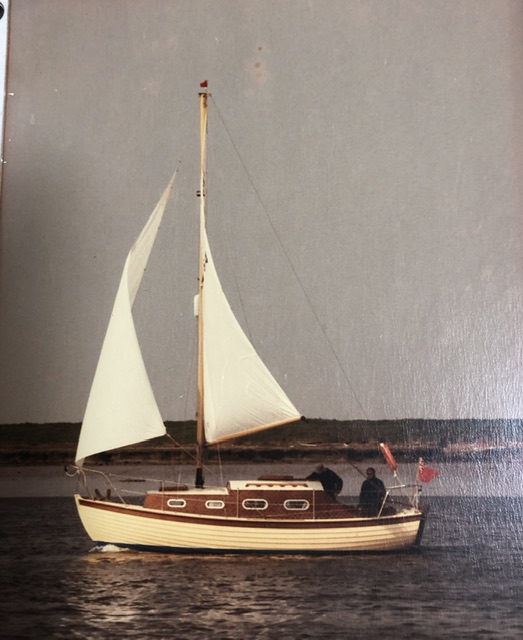
So, moving on forty years we gave the boat a bit of a refit during May and June 2023, just short of the fortieth anniversary of our ordering Whimbrel.
See: https://nickardley.com/ditch-crawler-mate-give-whimbrel-a-fortieth-anniversary-refit/
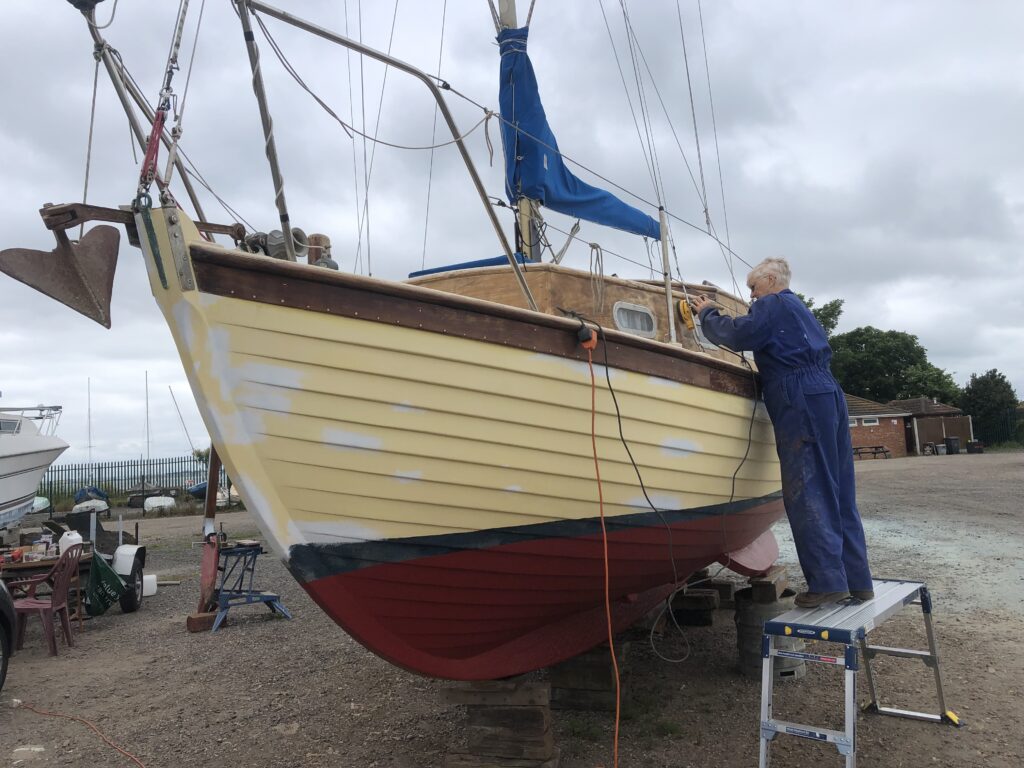
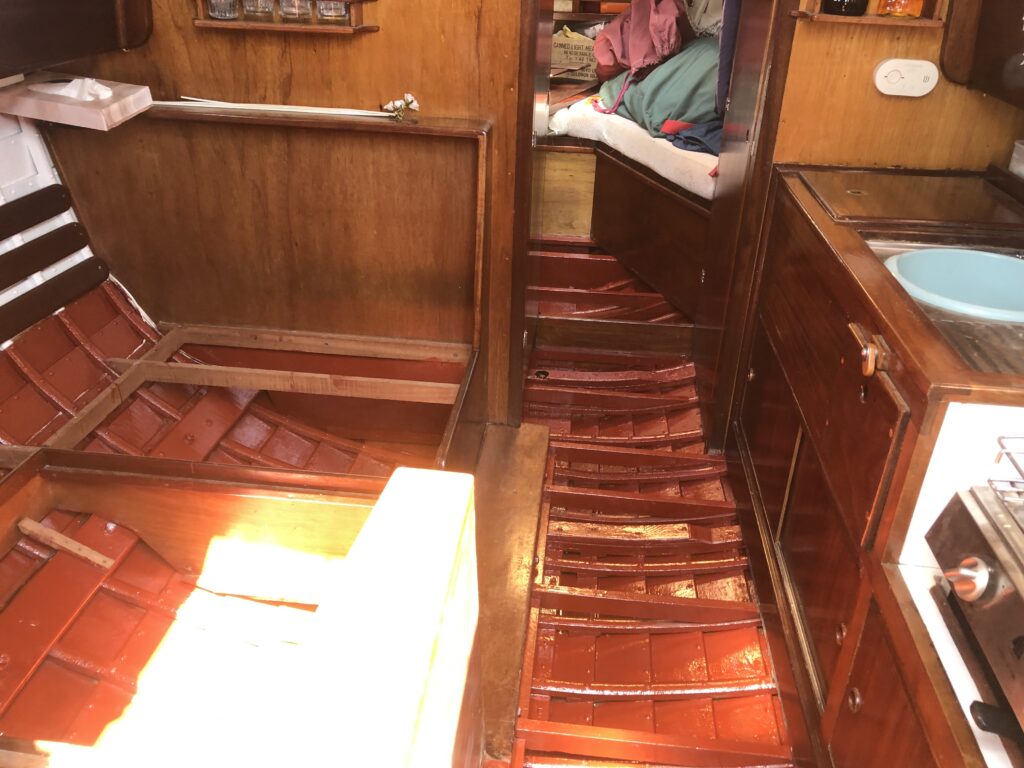
The boat was out of the water exactly four calendar weeks. Upon relaunching we sailed directly for the River Medway for a couple of days away.
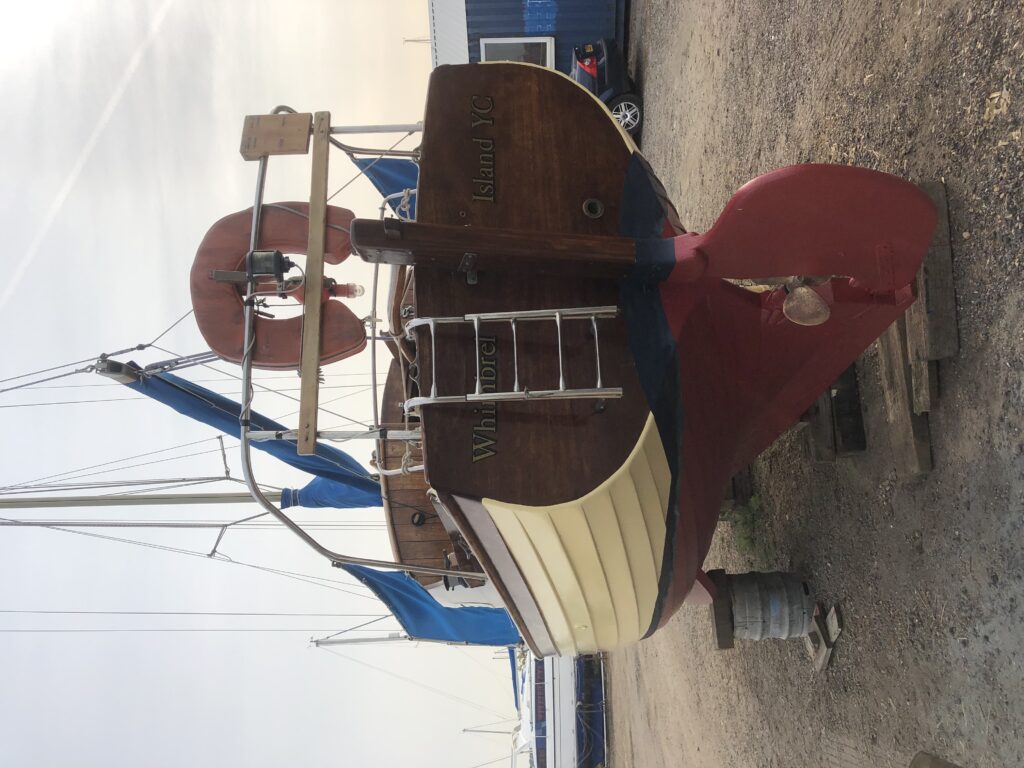
Note ‘Island YC’ has since been removed.
We are no longer berthed on the Lower Thames – after trouble at the Island YC which resurfaced after we had been bullied a few seasons before, we left. The boat is now kept at The Blackwater Marina – a pleasant, friendly welcoming place, a place oft visited since the old yard became a marina in the early 1990s.
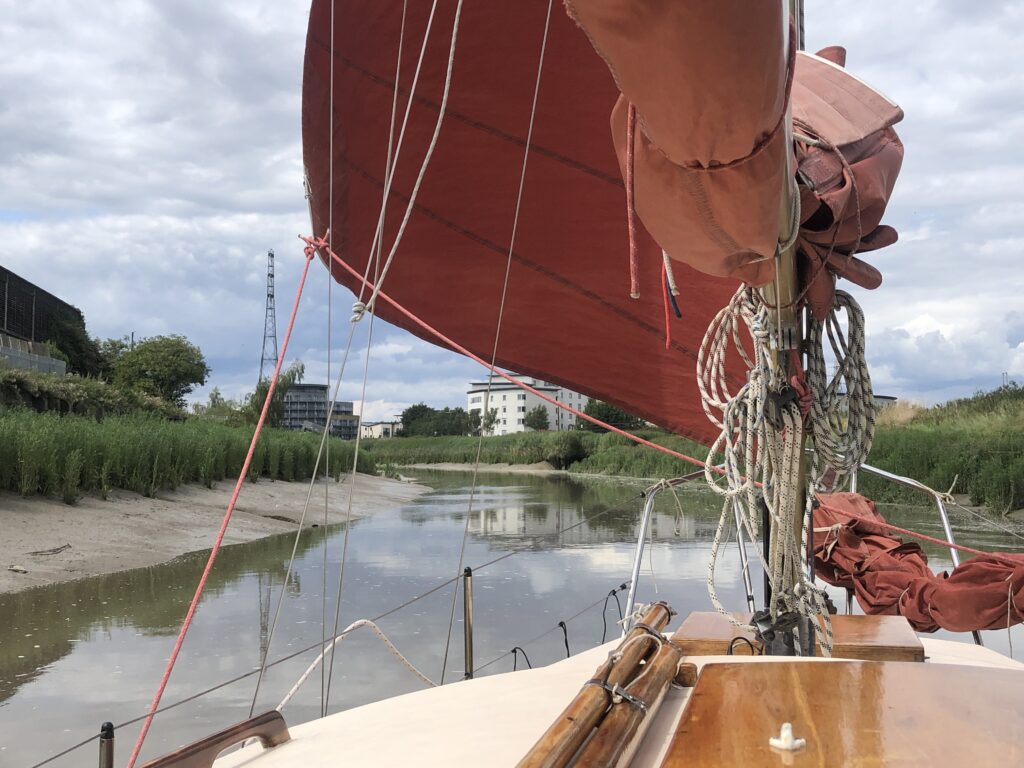
Whimbrel came out recently due to a propeller key failure. It was soon fixed. The hull coating was repaired as needed, antifouling done and hull varnish work sanded back and given two coats.
More recently, Christobel cleaned through, inside, while I sanded the cabin sides and varnished, outside.
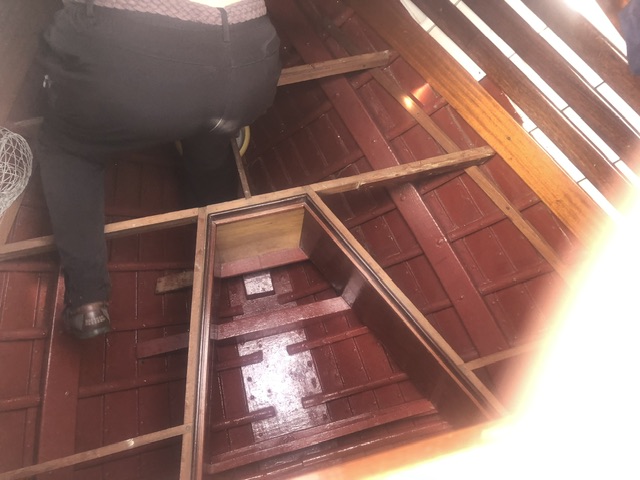
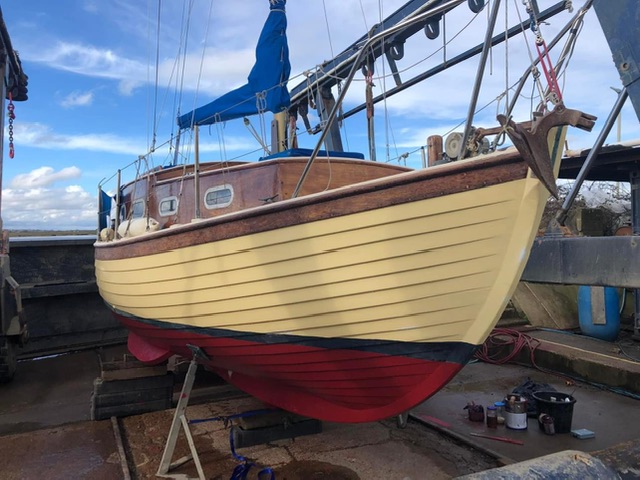
The underside of the galley area deck and varnish work was recoated too. So, we are ready for the Whimbrel’s fifth decade…
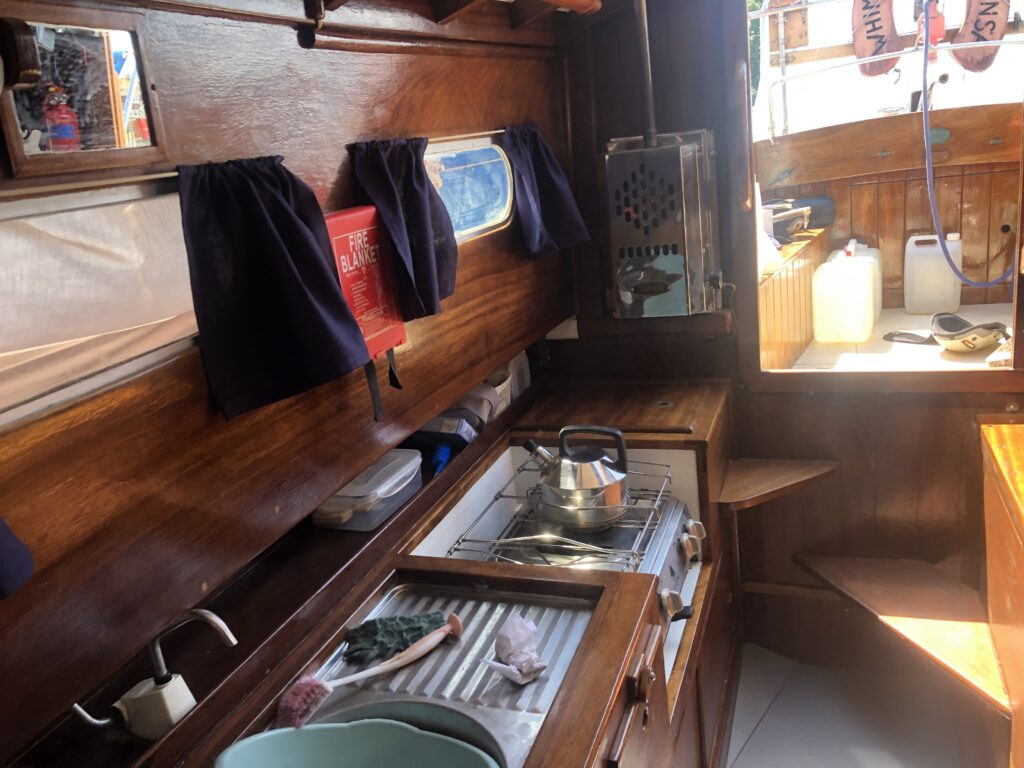
Below, she looks as good as new.
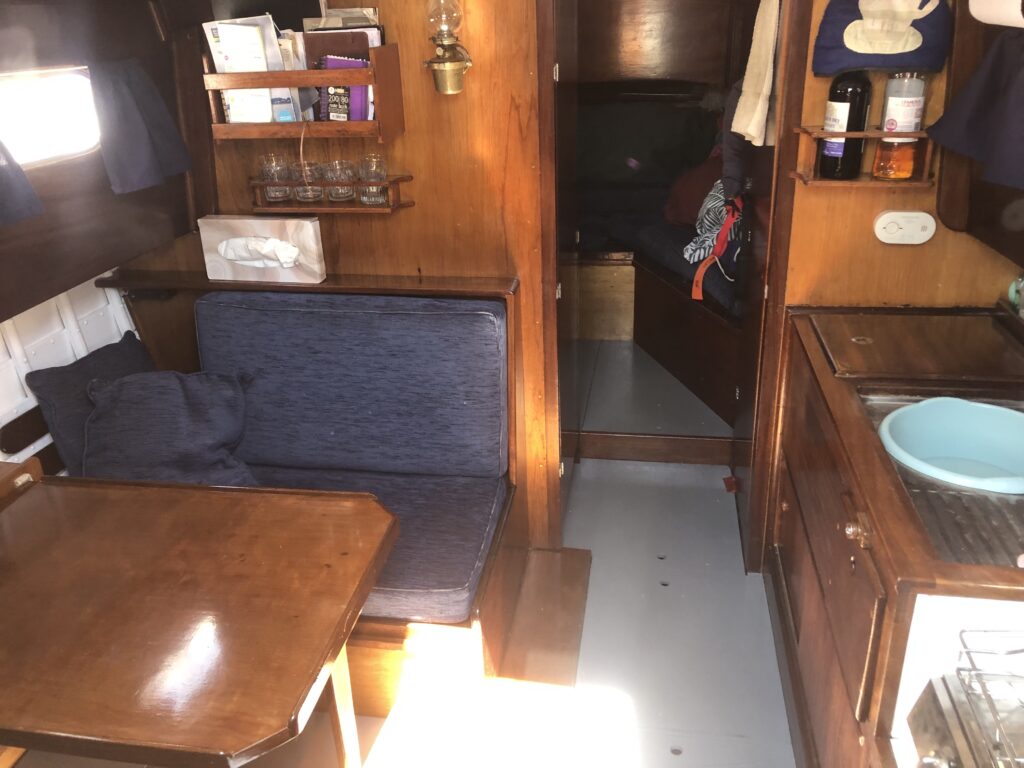
In her forty-first year…
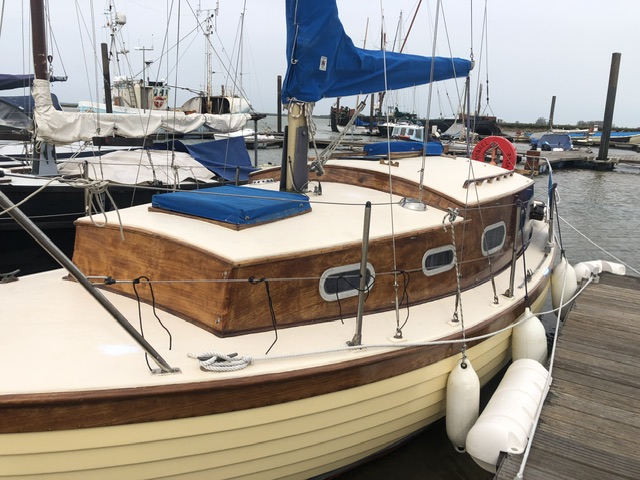
Whimbrel is at her new home berth at The Blackwater Marina – a friendly place!
Whimbrel is ready for a shakedown trip of a couple of nights: the cries of curlews amongst the saltings in Pyefleet are calling…
